|
Spring is in full swing, with flowers blooming against a background of vibrant green foliage bursting from trees. Birds are nesting, and butterflies are reaping the benefits of sweet floral nectar. It is the season of renewal and the promise of new beginnings. With warmer weather upon us, I believe we are all ready to embrace the outdoors. I certainly am! As most of my readers know, what type of wine I drink is not dictated by the weather, but what my palate is in the mood for. Billy Joel’s lyrics from the song “Scenes From An Italian Restaurant” ring true for me. “A bottle of white, a bottle of red Perhaps a bottle of rose instead” “A bottle of red, a bottle of white It all depends upon your appetite” So, with that in mind, here is a sampling of four wines I received, which will please your palate and pair well with spring, and all year round! Domaine Bousquet Reserve Organic Chardonnay 2023 Domaine Bousquet is no stranger to my website. I have reviewed and thoroughly enjoyed all of their wines throughout the years. This family-owned estate is in the Gualtallary Valley, high up in the Tupungato district of the Uco Valley in Argentina’s Mendoza region. This 100% Chardonnay comes from certified organic estate fruit and is hand-harvested from low-yield vineyards located at the foot of the Andes at an elevation of 4000 plus feet. 50% of the wine is fermented in oak for 15 days, and the other 50% in tanks. The wine is aged for six months in 3rd use French oak barrels on the lees for a Burgundian style. Nose: Lovely floral and tropical notes, with apples, lime, freshly baked bread, and a hint of vanilla. Palate: Creamy mouth-feel with beautiful acidity, oak aromas transcend on the palate with pear and tropical notes of pineapple and pink grapefruit. Oak and acidity persist on a long and delicious finish. Alcohol: 13.5% SRP: $18 Pairing suggestions: Enjoy as an aperitif or with seafood, salads, cream-based pasta, mushroom risotto, or cheese. Herzog Lineage Pinot Noir Clarksburg 2023 Herzog Wine Cellars has a long family history of winemaking that spans nine generations. From Europe to New York to the vineyards of California, the Herzog family gave rise to the American kosher wine industry, including premium kosher winemaking in California. Today they have eight brands of wine, one of which is the Lineage brand. This 100% Pinot Noir is harvested from vineyards in Clarksburg, CA. Try as I might, I could not find any technical data or the aging process of this wine. Nose: Cherries, pomegranate, cocoa, and baking spice. Palate: Silky mouth-feel with cherries, strawberry, earthy, and a hint of baking spice lingering on the finish. Alcohol: 13% SRP: $20 Pairing suggestions: Roasted leg of lamb, duck with cherry glaze, grilled portobello burgers, or seared tuna. Attems Pinot Grigio Ramato Friuli DOC This wine is produced by Attems, a historic estate located in Friuli, in northeast Italy. In 2000, the estate was sold to the Marchese Vittorio Frescobaldi. Pinot Grigio, aka Pinot Gris, is a white wine grape that thrives in a cool climate. The vineyards for this grape are situated in the middle area of the property, known as “manine” or “little hands” which is a primarily flat area set between Collio and Isonzo. This 100% Pinot Grigio gets its coppery/coral color from slight contact of about ten hours with the purple skins before pressing and fermenting. Following fermentation, the wine rested for four months on noble lees. Nose: White fruit, melon, cherry, citrus, and wildflowers. Palate: Crisp fruit with nice acidity, pink grapefruit, melon, cherry pie, and minerality lingering on the finish. I love the dance between tart and juicy. Alcohol: 12.5% SRP: $20 Pairing suggestions: Seafood, goat cheese wrapped in prosciutto, cream-based pasta, grilled veggies, or enjoy as an aperitif. Darom by Yatir Cabernet Sauvignon 2023 Yatir Winery, founded in 2000, is located at the southern tip of the Judean Hills, and built at the foot of the Israelite Tel Arad Fort (an archeological site) in the heart of the Negev desert. The vineyards of the Yatir Forest are just 10 minutes away. Vineyards are planted at an altitude of up to 900 meters above sea level and are dispersed throughout different locations in the forest, each with its own distinct feature. The dry desert climate and cool nights contribute to producing exceptional wine grapes. The grape blend for this wine is 85% Cabernet Sauvignon, 10% Petit Syrah, and 5% Shiraz. Grapes are hand-harvested; the wine is aged for eight months in small oak barrels. Nose: Dark fruit, cherry, baking spice, forest floor, and a hint of violet.
Palate: Rich and fruit-forward with lots of berries, cherry, spice, earthy, and slate. Alcohol: 13% SRP: $35 Pairing suggestions: Prime ribs, Mediterranean cuisine, risotto, and chocolate desserts. Whatever the season, occasion, or “just because” moment, these wines are price-approachable, and your palate will thank you! “A bottle of red, and a bottle of white Whatever kind of mood you're in tonight” Billy Joel Until next time… Cheers! Penina To leave a comment or if you have an inquiry, please contact me at [email protected] Whether you are searching for a holiday gift or a tasty sip to pair with a meal, I recommend the following five wines from Argentina, Italy, Oregon, Washington, and Virginia to add to your shopping list! Unánime Signature Malbec 2018 Mascota Vineyards is located in La Consulta, San Carlos, a small wine-growing sub-region in the southern Uco Valley of Mendoza, Argentina. Winemaker Rodolfo Sadler founded Mascota and has crafted wines for over 30 years. This 100% Malbec is aged for 14 months in French oak barrels. Nose: Violets, fresh red fruit, and baking spice. Palate: Bing cherries, red plum, with a hint of dark berries and subtle notes of dark chocolate, espresso, and pepper on a lengthy finish. Smooth and balanced with complex layers. Alcohol: 14.5% SRP: $40 Pairing suggestions: Hearty stews, roasted meat, fowl, or mushroom risotto. Intrinsic Red Blend 2021 Intrinsic Wine Co is a Washington state wine brand created by Juan Muñoz Oca, head winemaker at Columbia Crest, and his team. Columbia Crest and Intrinsic are both owned by the largest wine company in Washington, Chateau Ste. Michelle Wine Estates. According to available information, the Intrinsic Red Blend 2021 is a blend of Malbec, Cabernet Franc, and Cabernet Sauvignon, originating from the Columbia Valley region of Washington state. Nose: Lovely notes of raspberry, dark cherry, and sweet plums, along with hints of violet, tobacco, and herbs. Palate: This rich and juicy blend shows off notes of chocolate, espresso beans, and pepper that blend well with ripe fruit. Silky tannins and well-balanced acidity lead to a long finish with spice and berries lingering on the palate. Alcohol: 14.5% SRP: $20 Pairing suggestions: Sip on its own or head to the dessert table with your glass! FIOL Prosecco DOC Extra Dry FIOL (pronounced FEE-yol) means “son” in Venetian dialect and “chap” in English. FIOL was founded in 2011 by Gian Luca Passi and co-founder Giovanni Ciani Bassetti. They are childhood friends who grew up surrounded by Prosecco. “Most local winemakers have been drinking sparkling wine for 50 years and need an extraordinarily strong bubble to really feel it. We wanted something gentler, more subtle, more fruity.” says Gian Luca Passi.” This sparkling wine is 100% Glera. Prosecco DOC requires a minimum 30-day secondary fermentation in tank. This wine remains in tank 40 days for extra depth and complexity. Nose: Green apples, a touch of white flowers, and citrus. Palate: Smooth bubbles with emphasis on the grape. It is crisp and refreshing with notes of apple, pear, minerality, and a touch of lemon zest. Alcohol: 11% SRP: $19 Pairing suggestions: Enjoy as an aperitif, in cocktails, or with appetizers, entrees, and dessert! Appassionata Andante Pinot Noir 2017 J. Christopher Winery, located in northern Willamette Valley, Oregon, is owned by iconic winemaker Erni Loosen, creator and owner of Germany’s Dr. Loosen and Villa Wolf estates. Following his passion for Pinot Noir, Erni set his sights on J. Christopher, eventually purchasing 40 acres and planting the Appassionata Vineyard. The grapes for this 100% Pinot Noir are sourced from 33-year-old vines in the Dundee Hills appellation. The wine was aged for 20 months in French oak barriques (25% new). The wine is released five years after vintage. Andante means ‘gently, unhurried.’ Nose: Exotic flowers, brioche, red berries, red plums, baking spice, herbal notes, and a whiff of orange. Palate: This is a lively wine that balances delicate and savory. Silky texture with bright cherry, pomegranate, baking spice, and orange zest. A long and tasty finish awaits. Alcohol: 13.5% SRP: $135 Pairing suggestions: Roasted fatty fish such as salmon, stuffed artichokes, duck, grilled meat, venison, and most cheese. Early Mountain Rise 2021 Early Mountain Vineyards is owned by Jean Case, who started the company in 2012. They are located in the foothills of the Blue Ridge Mountains in Madison, Virginia, with more than 55 acres of planted vineyards. Rise is reserved for only the finest vintages with specific selections from exceptional mountainside vineyards. It is a beautiful blend of 58% Merlot, 17% Petit Verdot, 15% Tannat, and 10% Cabernet Franc. The wine is aged for 20 months in French oak barrels (52% new) and 18 months in bottle prior to release. If properly stored, this wine will drink well from 2024-2050. Nose: Floral, dark berries, plum, cedar, baking spice, and forest floor.
Palate: A perfect dance of structured tannins merging with acidity leads to an elegant wine. Aromas segue onto the palate with lingering notes of chocolate, spice, and decadent berry pastries on a long finish. Alcohol: 14.8% SRP: $150 Pairing suggestions: Hearty stews and soups, roasted red and white meat, mushroom risotto, pasta, seared tuna, charcuterie board, and spinach quiche. I hope these wines have aroused your curiosity. Your palate will appreciate it! Happy tasting! Until next time… Cheers! Penina To leave a comment or if you have an inquiry, please contact me at [email protected] Bastille Day is celebrated in France every July 14th, and in many French-speaking regions worldwide, including the USA. The French also refer to this day as “Le Quatorze Juillet” (the 14th of July) or “La Fête Nationale” (the National Day) On July 14th, 1789. a group of revolutionaries stormed the Bastille prison in Paris, marking the start of the French Revolution. The Bastille was a symbol of the tyrannical rule of the Bourbon monarchy. Without going into a detailed history lesson, suffice it to say King Louis XVI and his wife Marie Antoinette were overthrown, ending the “Ancien Régime.” The Bastille prison was torn down by the order of France’s new revolutionary government, with the last stone removed in 1790. King Louis XVI was publicly beheaded on January 21st, 1793, making him the only French king to ever be executed. Marie Antoinette met the same fate at the guillotine on October 16th, 1793. Although it was a violent time, Bastille Day is celebrated in France with parades, fireworks, food, wine, and dancing. And even though I never need a reason to pour a glass of wine, it’s a perfect time to open a bottle of French wine and toast Bastille Day! Here are three wines that will tickle your palate on Bastille Day or any day of the year! C’EST LA VIE Pinot Noir-Syrah Pays d’Oc IGP 2020 This brand was created by Maison Albert Bichot. The Bichot family was established in Burgundy in 1350. Founded in 1831, Domaines Albert Bichot currently owns six estates throughout Burgundy. This wine is a blend of 60% Pinot Noir and 40% Syrah, with grapes sourced from the Languedoc-Roussillon. It is vinified and finished in stainless steel. Nose: Floral notes, red berries, and a hint of spice. Palate: Vibrant and smooth with strawberry, raspberry, ripe cherry, and a dollop of spice. Alcohol: 13% SRP: $13 Pairing suggestions: Enjoy on its own or with grilled fish, meat, cheese, and light bites. Slightly chilled on a hot day, this wine is quite refreshing. Trenel Beaujolais Cuvée Rochebonne AOP 2021 Maison Trenel was founded in 1928 by Henri Claudius Trénel and is in the heart of the South Burgundy and Beaujolais wine regions. The grapes for this 100% Gamay are sourced from the regional appellation “Beaujolais,” east of the “Pierres Dorées” area, on three parcels east-oriented and facing the Mont Blanc. The wine is aged for five months in cement tanks and is unfined and lightly filtered before bottling. Nose: Fruity aromas, red berries, cherry, spice. Palate: Aromas segue onto the palate with crisp and juicy notes of strawberry, raspberry, cherry, and a touch of pepper lingering on the finish. Alcohol: 12.5% SRP: $21 Pairing suggestions: Soft cheese, cheese tarts, quiche, fish stew, seared tuna, and roasted chicken. La Perrière Mégalithe Sancere 2016 Saget La Perrière is a family-run company in the Loire Valley, France. With 890 acres of vines in the finest appellations and six estates, it carries on the tradition of nine generations dedicated to producing fine wines. The estate’s 106 acres of Sancerre vineyards (Sauvignon Blanc grapes) are in the Bannay, Verdigny, Saint-Satur, Crézancy, and Vinon districts. Megalithe is the icon wine of Saget La Perrière. The first vintage was produced in 1998. The goal of Megalithe is to showcase the beauty of aged Sauvignon Blanc. The grapes are hand-harvested, and “after a gentle pressing, 40% of the must is fermented in new 300-liter oak barrels from Allier. The wine stays in barrel for eight to nine months, and the lees are stirred regularly to give the wine weight and complexity. To preserve the character of Sauvignon, the other 60% of the must is vinified and matured with particular care in steel vats.” Nose: Elegant and complex aromas of honeysuckle, apples, apricots, stone fruit, vanilla, and a touch of flint. Palate: Rich texture with a beautiful balance of salinity and ripe fruit. This wine has so much character! Alcohol: 12.5% SRP: $45 Pairing suggestions: Enjoy as an aperitif or with lobster, seafood, goat cheese, and salads. Until next time… Joyeux jour de la bastille!
Cheers! Penina To leave a comment or if you have an inquiry, please contact me at [email protected] The month of April is ending with her classic “April showers” all weekend long. And we all know what May brings! I’m looking forward to May flowers, warmer weather, spending more time outdoors, and taking the kitchen outside for the grilling season. Just because the warmer months are almost upon us does not mean one has to pack away the red wines along with mittens and boots. On the contrary, red wines are to be enjoyed year-round and are a great accompaniment to many summer dishes. So to kick off the season, I’ve rounded up a selection of six red wines that will pair beautifully with whatever you might have on the grill. The wines range from $13.99 to $25.00 and will not disappoint your palate. Bodegas Valdemar Conde Valdemar Crianza 2018 Bodegas Valdemar Winery is located in Oyon, Alava Spain, and has a history of winemaking dating back to 1889. They have 300 hectares of vineyards throughout Rioja and are considered one of the largest estates in Rioja. Grapes for this wine are a blend of 89% Tempranillo, 7% Mazuelo, and 4% Graciano sourced from estate vineyards in Rioja Alavesa and Rioja Alta. The wine is aged in American oak barrels for 17 months. Nose: Fragrant notes of blueberries, cherry, and baking spice. Palate: Juicy dark berries, cherry, vanilla, and earthy. Tannins and acidity are well-balanced, with dark fruit lingering on a long finish. Alcohol: 14% SRP: $19 Pairing suggestions: Cheese platter, grilled meat, tuna, veggies, pasta, stews, and pizza. Veramonte Pinot Noir 2020 Viñedos Veramonte is an organic estate located at the extreme eastern end of Chile’s Casablanca Valley. The Veramonte vineyards are in both Casablanca Valley and Colchagua Valley. This wine is made with 100% Pinot Noir organic grapes from Casablanca Valley. It is aged for eight months in natural oak. Nose: Red berries, bing cherries, a hint of spice, and earthy. Palate: Strawberry, raspberry, and plum dance on the palate. Fresh with good acidity, silky tannins, and a long, savory finish. Alcohol: 13.5% SRP: $13 Pairing suggestions: Grilled meat and poultry, risotto, pasta, or seafood salad. Cline Eight Spur Zinfandel, Dry Creek Valley 2020 This California wine is produced by Cline Family Cellars, established in 1982, a family-owned and operated winery. The grapes for this 100% Zinfandel are sourced from Dry Creek Valley in Sonoma County, one of the oldest growing areas in California. The valley holds the daytime heat, ripening grapes until sundown when cool ocean breezes whistle through the canyon, extending the growing season to increase varietal complexity. The wine is aged in 40% new French oak for 15 months. Nose: Berries, dark cherry, plum, and baking spice with a hint of lavender. Palate: Aromas segue onto the palate with notes of raspberry, blackberry, blueberry, and vanilla. It is rich, smooth, and well-structured, with sour cherries and vanilla lingering on the finish. Alcohol: 14.5% SRP: $25 Pairing suggestions: Grilled anything! BBQ ribs, spicy cuisine, pizza, seared tuna, or roasted leg of lamb. Graffigna Glorious Collection Malbec 2020 Graffigna was established in 1870 when Santiago Graffigna left Italy and arrived in San Juan, Argentina, bringing with him his passion and wine expertise. It is considered one of the oldest wineries in San Juan. Today, Santiago’s vision and spirit are honored with each bottle produced, and care is taken to maintain the quality and character of the grapes. The grapes for this 100% Malbec are sourced from the Uco Valley in Mendoza. 70% was aged in French oak for 12 months, and 30% in concrete and stainless steel vats. Nose: A touch of violet, plum, sour cherry, and baking spice tease the senses. Palate: Concentrated and juicy fruit, with aromas spilling onto the palate. Blackberry and plum linger on the finish, with soft tannins and nice acidity. Alcohol: 14.5% SRP: $18.99 Pairing suggestions: BBQ, grilled meat and veggies, mushroom risotto, stews, or a charcuterie board. Cantine Ermes Epicentro Nero d’Avola Riserva Sicilia DOC 2018 Cantine Ermes was founded in 1998 in the heart of Belice Valley in Sicily. It is a cooperative “born from the idea of young Italian minds.” They produce wines from Sicily, Veneto, and Puglia, with an impressive 10,592 hectares of vineyards spread across these territories, with the majority of vineyards in Sicily. This wine is 100% Nero d’Avola aged in 500-liter tonneaux for 18 months. Nose: Lovely bouquet of dark fruit, plum, berries, and baking spice. Hints of toasted oak and minerality waft through the fruit. Palate: Aromas continue onto the palate with strawberries, cherry, clove, and pepper. Soft tannins and well-balanced with a rich blackberry jam finish. Alcohol: 14% SRP: $17 Pairing suggestions: BBQ, grilled meat and fowl, marinated lamb, pasta, stew, or mature cheese. Talosa Rosso Di Montepulciano DOC Toscana 2020 Talosa is a boutique winery with 33 hectares of vineyards in the heart of Montepulciano in Tuscany and has been owned by the Jacorossi family since 1972. Their historic aging cellar dates back to the 16th century, which is in the old town center of Montepulciano, in an underground area between two of the oldest buildings in the city, Palazzo Tarugi and Palazzo Sinatti. The brick passageways contain a series of vaults and niches where the barrels are placed. The grapes for this wine are 85% Sangiovese, Merlot and Canaiolo, 15%. It is aged in stainless steel, tonneaux, and large barrels for a minimum of three months. Nose: Floral, strawberries, blueberries, cherries, and a hint of spice. Palate: Fresh and lively, with notes of plum and sweet cherry, a balsamic undertone, and a touch of spice on the finish. Very nice. Alcohol: 13.5% SRP: $25 Pairing suggestions: Grilled red and white meat, appetizers, seared tuna, spicy cuisine, or risotto. I hope these wines pique your interest! Below is a delicious recipe for marinated tuna steaks. It is an easy recipe to make and works using the grill, broiler, or a quick sear on the stovetop. I love it! And all of these wines will pair beautifully with it! Marinated Tuna Steaks For The Grill Courtesy of allrecipes.com Ingredients (for four servings)
If you try any of the above wines, please share your thoughts and pairings!
Until next time… Cheers! Penina To leave a comment or if you have an inquiry, please contact me at [email protected] Summer has ended, but autumn brings its magic with mother nature’s dramatic foliage display, crisp “sweater” weather, and a season filled with apple picking, pumpkin carving, and grape harvests! With temperatures beginning to drop, I’m focusing on red wines a bit more. Of course, I’ll be drinking white and rosé wines all year long, but with cooler weather in the forecast, I predict red wines paired with stews and hearty soups will start to replace lighter fare. And who can resist sipping a lovely Pinot Noir, Tempranillo, Cabernet Sauvignon, Cabernet Franc, Carménère, or a Sangiovese from Chianti Classico? It’s a perfect way to welcome autumn. Here are seven palate-pleasing wines from Spain, California, Chile, Italy, and Oregon to pair with fall cuisine. Bodegas Montecillo Reserva Rioja 2013 Bodegas Montecillo is Rioja Spain’s third-oldest winery and the second oldest in Rioja Alta, dating back over 150 years. This wine is a blend of 90% Tempranillo, 8% Garnacha, and 2% Mazuelo. It was aged for two years in handcrafted oak barrels followed by 18 months in bottle. Nose: Juicy, red fruit, clove, herbs, and floral hints. Palate: Plum, cherry, baking spice, silky tannins, hints of cedar, and a touch of fennel on the finish. A fantastic wine for the price! Alcohol: 13.5% SRP: $15 Pairing suggestions: Charcuterie, stews, hearty soups, grilled or braised meats and game, or seared tuna. Cune Organic Rioja 2020 CVNE (pronounced coo-nay) is an acronym for Compania Vinicola del Norte des Espana, and it is one of Rioja’s most iconic and historic wine producers. Two brothers founded the winery in 1879, and within six years, they began receiving international awards for their wines. The current owners are direct descendants and represent the fifth generation. This wine is a blend of 60% Garnacha, 30% Tempranillo, and 10% Graciano. It is aged for six months in oak barrels. Nose: Floral, wild berries, herbs, and spice Palate: Juicy and fresh with aromas carrying through to the palate with cherry, anise, and spice notes. Delicious! Alcohol: 13.5% SRP: $17 Pairing suggestions: Cheese platter, meats, pasta, risotto, or stews. Josh Cellars Lodi Reserve Cabernet Sauvignon 2020 Joseph Carr formed his own wine company in Napa Valley after spending a decade as a world-class sommelier and another decade as a wine industry executive. His dream was to have a family-owned winery, so in 2005 he began making wines under the label ‘Joseph Carr.” In 2007 Carr launched Josh Cellars as a tribute to his dad, Josh, who inspired and influenced the man Carr is today. “Every bottle of Josh Cellars wine produced honors and acknowledges his father.” In honor of his father, a volunteer firefighter in upstate NY, Carr created the “Lodi Cabernet Sauvignon” as a tribute. The winery donates $1 for every bottle of the Lodi Cab sold to either the National Volunteer Firefighter Council or local firefighter charities nationwide. Nose: Dark cherry, berries, spice, and chocolate Palate: Dark berries mingle with cherry, plum, espresso, and baking spice- firm tannins and beautifully structured with a long finish. Alcohol: 14% SRP: $21.99 Pairing suggestions: Grilled meat, game, mushroom risotto, hearty soups, stews, or pumpkin chili. Viña Maquis Gran Reserva Cabernet Franc 2018 The Hurtado family, owns the Maquis estate, now in its fourth generation. Practicing sustainability, the grapes for this wine are sourced from vineyards in Colchagua Valley, Chile, where the winery is located. The blend for this wine is 90% Cabernet Franc, 7% Carménère, and 3% Petit Verdot. It is aged for 12 months in French oak barrels. Nose: Red berries, floral notes, baking spice, and a bit earthy. Palate: Lush fruit with strawberry plum, cherry, herbs, and spice. Complex and rich, but not overpowering. Alcohol: 14% SRP: $24 Pairing suggestions: Barbecued ribs, seared tuna, spicy Asian cuisine, grilled or braised meat, stew., or glazed breast of duck. TerraNoble CA1 Andes 2018 TerraNoble, founded in 1993, is located in the Maule Valley of Chile. TerraNoble initially presented itself as a boutique winery specializing in Merlot. However, in 1994 Chilean Merlot was identified as Carménère, So, TerraNoble committed to this rediscovered variety. And since then, they have extended viticultural experimentation and innovative winemaking practices to the Colchagua and Casablanca valleys. The grapes for this 100% Carménère are handpicked from their best vineyard plots in the Colchagua Valley at the foot of the Andes. 70% of the wine was aged in new and previously used 300-L French oak barrels, and 30% in untoasted foudre for 12 months. It was then further aged for six months in bottle. Nose: Lush dark fruit, spice, earth, dark coffee beans, and herbs. Palate: Dark berries, herbs, and spice blend with silky tannins that are nicely balanced with acidity. The finish is long, with dark chocolate, espresso, and a hint of herbs lingering. Alcohol: 14.5% SRP: $24.99 Pairing suggestions: TerraNoble suggests thick ribs, oven-roasted beef brisket, risotto, or seasoned foods. Querciabella Chianti Classico DOCG 2018 Querciabella was founded in 1974 with a commitment to quality, sustainability, and authenticity. Querciabella has continually sharpened its approach to biodynamic viticulture for over a decade. With vineyards throughout Tuscany’s Chianti Classico and Maremma areas, Querciabella exemplifies the respectful preservation of tradition through forward-thinking, albeit completely natural winemaking. This 100% Sangiovese wine is vegan. No animal products or byproducts are used in the production of this wine. It is aged for 12 months in fine to extra fine-grained oak barriques (225L) and tonneaux (500L) which 10% is new. Nose: Floral, red cherry, red berries, baking spice, and a slight hint of licorice. Palate: This is a fine and silky wine that is fresh, juicy, vibrant, and elegant. Aromas segue onto the palate with hints of chocolate, plum, and sour cherry on the finish. Alcohol: 14.5% SRP: $33 Pairing suggestions: Classic Tuscan dishes, seared tuna, mushroom risotto, salmon burgers, or Asian cuisine. J. Christopher Volcanique Pinot Noir 2018 J. Christopher Winery is a small winery in northern Willamette Valley, Oregon, owned by well-known winemaker Erni Loosen, creator and owner of Germany’s Dr. Loosen and Villa Wolf estates. Following his passion for Pinot Noir, Erni set his sites on J. Christopher, eventually purchasing 40 acres and planting the Appassionata Vineyard. Ernie and his team are proactive when it comes to sustainability. Maintaining healthy soil and vines is a priority. The grapes for this 100% Pinot Noir cuvée are sourced from vineyards in Dundee Hills with volcanic soil. The wine is aged 18 months in barriques (25% new), with no fining or filtration. Nose: Floral, cherry, red berries, cranberry, baking spice, and minerality.
Palate: Fresh, juicy, and elegant, with aromas spilling onto the palate along with notes of raspberry, pomegranate, and hints of oak and spice. Fine tannins and a silky mouthfeel add to this dry and savory wine. Alcohol: 13.5% SRP: $40 Pairing suggestions: Grilled meat, barbecued chicken, veal marsala, casseroles, stews, or pizza. Enjoy and happy autumn! Until next time… Cheers! Penina To leave a comment or if you have an inquiry, please contact me at [email protected] The curtain has finally lifted, and the summer of 2022 will be filled again with festive outdoor concerts, fairs, and picnics. So whether you’re headed to an event, the beach, or enjoying leisure backyard time at home with family and friends, apply the sunscreen and grab a cooler because I’ve got you covered with some easy-to-transport wines and a few other thirst-quenching treats. Grand View Research said, “The global canned wines market size was valued at USD 211.4 million in 2020. The rising demand for convenient, portable, and single-serve beverages is the key driver for the market growth.” According to a new report from Grand View Research in May 2021, “The global canned wines market size is expected to reach USD 571.8 million by 2028, registering a CAGR (compound annual growth rate)of 13.2%. Canned beverages are highly convenient due to the compact size of cans. Moreover, there has been a growing demand for portable and less fragile wine containers than glass. These factors are projected to support the market growth.” Francis Ford Coppola Sofia Brut Rosé Canned Wines Located in Sonoma County, this iconic winery produces more than 40 wines on-site and is now offering brut rosé in Mini Cans! Sofia Brut Rosé (a tribute to Coppola’s only daughter.) is an off-dry, light, effervescent wine and a perfect addition to the picnic basket. This rosé is a blend of 40% Pinot Grigio, 22% Zinfandel, 20% Grenache 15% Pinot Noir and 3% Chardonnay. It is refreshing and crisp with notes of floral, peach, strawberries, and a touch of lemon zest on the finish. Alcohol: 11.5% SRP: $20 for a 4-pack Each can holds 187-ml of wine. Pairings: Enjoy as an aperitif or with BBQ fare, paté, cheese, and dessert. Domaine Bousquet Le Petit Canned Wines These certified organic wines are produced from grapes grown in the cool Argentine foothills of the Andean mountains. Domaine Bousquet is Argentina’s leading producer and exporter of certified-organic wines. They are the first to present canned wines from Argentina made from certified organic grapes. “Le Petit” is “The Little One” in French. The fruit for both wines is from the 2021 harvest sourced from vineyards in Tupungato, Alto Gualtallary, at 4000 ft. altitude. Le Petit Bubbly Rosé This wine is a blend of 50% Pinot Noir, 30% Syrah, 10% Pinot Gris, and 10% Viognier and is made using the Charmat method. It has lots of fresh berry aromas, and the palate offers a dry, crisp wine with refreshing fruit and soft bubbles. Alcohol: 12.5% SRP: $13 for a 4-pack/$3.50 per can. Each can holds 250-ml of wine. Pairings: Enjoy as an aperitif or with shellfish, salads, and fruit. Le Petit Malbec This 100% Malbec oozes juicy black and red berry aromas that segue onto the palate with a bit of earthiness and fig. A touch of spice lingers on the finish. Alcohol: 14% SRP: $13 for a 4-pack/$3.50 per can. Each can holds 250-ml of wine. Pairings: It’s a perfect match for BBQ or hard cheese and fruit. In addition to premium single-serve wines, premium boxed wines are also gaining popularity. Their portability and the lure of a smaller carbon footprint are appealing. Boxed wines usually come in 3-liter to 5-liter sizes, making it easy to accommodate your entertaining needs. Also, boxed wines are easy to transport and unbreakable, and each 3L box is equivalent to four bottles of wine! And the wine will stay fresh for 30 days or longer in the refrigerator if it’s in a vacuum pack. Sandy Giovese Vino Rosso Boxed Wine Amy Ezrin is the founder of Sandy Giovese wines and teases that the character name “Sandy Giovese” is her alter ego. The name is a playful spin on the Sangiovese grapes used to make this boxed wine, which is 85% Sangiovese and 15% Trebbiano. It is produced from organically-farmed grapes sourced from vineyards in Italy’s Le Marche region, located on the Adriatic Sea. Nose: Red fruit, violets, and a hint of herbs. Palate: Cherry, cranberry, crisp acidity, refreshing and light, an easy-drinking wine. Alcohol: 12% SRP: $34.99/3L box Pairings: Aperitif, pasta, pizza, BBQ, grilled chicken, fruit & cheese platter. Domaine Bousquet Natural Origins Rosé 2021 Boxed Wine Along with bottled and canned wines, Domaine Bousquet also produces a line of organic “bag in a box” boxed wines. Fruit for Natural Origins line is sourced from the upper reaches of the Tupungato Valley, known for producing grapes with an abundance of aroma, flavor, and freshness thanks to large day-night temperature differentials and the intense Andean sunlight. The box states that the wine will stay fresh for 90 days after opening! The organic grapes for this rosé are a blend of 50% Pinot Noir, 30% Syrah, 10% Pinot Gris, and 10% Viognier. Nose: Red berries, cherry, and a hint of floral. Palate: Strawberry, cherry, and a touch of spice with fresh acidity. Refreshing and perfect for an outing. Alcohol: 12% SRP: $20/3L box Pairings: Aperitif, seafood, shellfish, salads, grilled chicken, or fruit and dessert. And, if you’re looking for festive and unusual single-serve, low-alcoholic beverages, these treats from SQZ will brighten the party. SQZ SQZ is located in Lanark, Illinois, and is owned by Anthony Curcio, CEO, and mastermind behind these low-alcoholic beverages. Anthony’s grandfather, Lorenzo Curcio, was known for his fruit wines made in the region of Calabria, Italy. And so, this family tradition was passed on from generation to generation, with Anthony taking it to another level. The packaging for these low-alcohol fruit wines is unique and whimsical. And if you don’t mind using glass outside, the concept of Mason jars is brilliant, and they are reusable! Each Mason jar contains 375 ml of wine. The fruit wines are hand-crafted and made in small batches using only natural ingredients. Lemon juice, water, cane sugar, and yeast are used as the base. All added flavors are sourced from real juice, with no extracts or preservatives. The water is locally sourced deep well water that is triple filtered to ensure consistency in each batch made. The juice is naturally fermented and blended in stainless steel tanks. All six flavors, including the newest, Key Lime-Jalapeno, are refreshing and range from crisp and tart to mildly sweet or spicy! Drink as is, or get creative and use SQZ in cocktails! Alcohol: 9% SRP: $29.99 for a six-jar pack. (equivalent to three bottles of wine) Single jar-$4.99 each For those who prefer to pour from a bottle instead of canned or boxed wine, here are a few premium screw-top rosés to pack in the cooler. No corkscrew needed! Bodegas Salentein Portillo Rosé 2021 Bodegas Salentein is located in the Uco Valley of Mendoza, Argentina. This privately-owned estate was established in the late 1990s and boasts almost 5000 acres, of which 1,124 acres are planted to vine. Many of their vineyards are situated at some of the highest elevations in the world. The grapes for this 100% Malbec are sourced from Valle de Uco appellation. Nose: Red berries, cherry, and floral. Palate: Fresh strawberry and raspberry with nicely balanced acidity. Light and refreshing! Alcohol: 13% SRP: $10.99 Diora La Belle Fête Rosé of Pinot Noir 2021 Diora is a brand of Delicato Family Wines, owned and run by the Indelicato family. Based in Monterey’s AVA, on Californias’s Central Coast, they have 1800 acres planted with vines. The grapes for this rosé are sourced from their estate San Bernabe Vineyard, and the wine is a blend of 88.2% Pinot Noir, 6.1 % Syrah, and 5.6% Grenache. The majority of the blend was fermented in stainless steel, with a small portion in neutral oak for a touch of creaminess to the palate. After two months, the wine was bottled. Nose: Cherries, red berries, and a hint of grapefruit. Palate: Aromas segue onto the palate with crisp acidity and notes of watermelon. It is dry and light, another great wine for the picnic basket. Alcohol: 12% SRP: $19.99 Saget La Perrière “La Petite Perrière” Rosé 2021 La Perrière is a family-run company located in the Loire Valley, France. With 890 acres of vines in the finest appellations and six estates, it carries on the tradition of nine generations dedicated to producing fine wines. This 100% Pinot Noir is sourced mainly from their estate vineyards in Touraine (Loire Valley), and a part of the blend is sourced from the South of France through their long-term partners. Nose: Fresh fruit notes of strawberry, floral, and a hint of minerality. Palate: This is a lively wine with juicy strawberry, raspberry, and a touch of grapefruit to balance it. Alcohol: 12% SRP: $13.99 Pairings for these three rosés: Enjoy as aperitifs or serve with seafood, salad, light pasta, BBQ, grilled chicken, or fruit and cheese platter. All the canned, boxed, and bottled wines should be served chilled. If iced tea is your go-to beverage, then here is a delightful collection of all-natural teas to brew and sip over ice while lazing in the hammock or sailing around the lake. Adagio Teas This family-owned company is aptly named Adagio (a musical term meaning “slow” or “at ease.”). Relaxing and slowing down the pace while drinking these refreshing teas works for me! They have two facilities, one in New Jersey and one in the UK. And all of the teas come directly from farmers around the world. The full-leaf, pre-measured pouches make the tea easy to prepare. Add water to a quart-size pitcher, toss in the pouch, and refrigerate for a few hours or overnight. There is an abundance of flavors to choose from, and sampler boxes are available. There are 40 varieties, such as herbal blends, chai, black, oolong, and the list goes on! One of my favorites is the Purple Papayaberry Iced Tea. It is blended with Hibiscus, Butterfly Pea Flower, Apple Pieces, Rose Hips, Orange, Papaya Flavor, Blueberries, Strawberries & Natural Blackberry Flavor. It’s perfect for a hot summer day. SRP: Iced tea sampler sets are $14 for six pouches that make one quart of tea per pouch. Purple Papayaberry is $8 for six pouches. Summer is in full swing, and it’s time to kick off your shoes, embrace the outdoors and indulge your palate!
Until next time… Cheers! Penina This article was originally published to Santé Magazine To leave a comment or if you have an inquiry, please contact me at [email protected] Many tend to drift toward white or rosé wines as the temps begin to climb. However, red wines should not be overlooked during the summer months. Many light-bodied to full-bodied reds are ideal for sipping outdoors while enjoying grilled fare. For instance, unoaked or lightly oaked red wines tend to be lighter and fruitier. And slightly chilling many red wines for no more than 30 minutes can enhance the flavors, minimize the focus on alcohol, and make the wine more refreshing. I recommend staying below 14% in alcohol content when choosing a wine to drink outside on a hot day. Alcohol is a diuretic that contributes to dehydration. And when combined with outside heat, which leads to sweating, one can become dehydrated quickly. Therefore, it is also essential to drink water and stay hydrated! I have chosen five red wines that range from 12.5% to 13.5% alcohol and can be enjoyed with whatever is sizzling on the grill. These wines pair beautifully with grilled red and white meats, game, fowl, tuna, and veggies. And if it’s too hot outside, bring your picnic and wine indoors, and sip away! Trapiche Oak Cask Wines Trapiche Winery is located in Mendoza, Argentina. Grapes for this collection are sourced from vineyards situated 2500 ft above sea level. The wines are aged for nine months in oak barrels. Trapiche Oak Cask Cabernet Sauvignon 2021 This wine is 100% Cabernet Sauvignon. Nose: Dark berries, cherries, and spice. Palate: Ripe blackberry, plum, spice, chocolate, and toasty notes with smooth tannins. Nice finish with a hint of tobacco lingering. Alcohol: 13.5% SRP: $8.99 Trapiche Oak Cask Malbec 2021 This is 100% Malbec wine. Nose: Dark cherry, plum, spice, and vanilla. Palate: Ripe dark berries spill onto the palate with a creamy mouthfeel and notes of pepper on a sweet finish. Alcohol: 13.5% SRP: $8.99 Saget La Perrière Saget La Perrière is a family-run company located in the Loire Valley, France. With 890 acres of vines in the finest appellations and six estates, it carries on the tradition of nine generations dedicated to producing the best wines. La Petite Perrière Pinot Noir 2020 This 100% Pinot Noir is mainly sourced from the Saget family’s estate vineyards in Touraine (Loire Valley), and part of the blend is sourced from the South of France through long-term partners. Nose: Cherry, floral, earthy Palate: Blueberry, dark plum, cherry, and balanced acidity with a fruity and long finish. Alcohol: 12.5% SRP: $13.99 San Felice San Felice estate is located in the heart of Chianti Classico territory in Tuscany, Italy. The estate covers an area of more than 650 hectares in the municipality of Castelnuovo Berardenga, at an altitude of about 400 meters above sea level. Over 140 hectares are devoted to wine vineyards, with about 17,000 olive trees, experimental plantations, and a hotel complex. San Felice Il Grigio Chianti Classico Riserva DOCG 2018 Grapes for this 100% Sangiovese are sourced from the San Felice estate. 80% of the wine is aged for 24 months in 60 or 90 hectoliters in Slavonian oak casks, and 20% is aged in 225-liter French barriques, followed by nine months or so in the bottle. Nose: Floral, red berries, dark cherry, and earth. Palate: Fresh red fruit spills onto the palate with spice, floral, a hint of herbs, and a lovely balance of acidity and smooth tannins. Alcohol: 13.5% SRP: $27 J. Christopher Winery This winery is located in northern Willamette Valley, Oregon, and is owned by well-known winemaker Erni Loosen, creator and owner of Germany’s Dr. Loosen and Villa Wolf estates. Following his passion for Pinot Noir, Erni set his sites on J. Christopher, eventually purchasing 40 acres and planting the Appassionata Vineyard. J. Christopher Medici Vineyard Pinot Noir 2018 The grapes for this 100% Pinot Noir are sourced from one of the oldest vineyards in the Chehalem Mountains appellation, and it is just a few miles east of the winery. The oldest blocks were planted in 1976, and in 2015 the vineyards were converted to organic farming. This wine was aged 18 months in barriques (25% new) and is unfiltered. Nose: Strawberry, floral, stone, and a trace of baking spice. Palate: Succulent red berries, cherry, vibrant minerality, and spice. Smooth and well structured with a long finish. Alcohol: 13.5% SRP: $60 In addition to the above wines, Grenache, Cabernet Franc, and Gamay make excellent grilling partners. Until next time…
Cheers! Penina To leave a comment or if you have an inquiry, please contact me at [email protected] Earth Day is a yearly celebration founded by Senator Gaylord Nelson in 1970. It is celebrated worldwide every April 22nd, and this year’s theme is “Invest In Our Planet.” The objective of Earth Day is to promote environmental awareness and respect for life on the planet. It is essential to do our part all year long and to move toward a more sustainable environment and a healthy future for the earth. Globally, more wineries than ever before are contributing their efforts to maintain sustainable practices in the vineyard and wine production. A chemical-free environment, careful use of energy, water conservation, and best use of the environment are becoming the focus. Many wineries are turning to organic farming and replacing the use of pesticides, fungicides, artificial chemical fertilizers, and herbicides with alternative measures that promote respect for the grape and its environment. Every country, state, and region has its own rigorous requirements for sustainability and organic farming certifications. In addition to these practices, carbon footprint reduction and biodynamic practices are other methods used in grape growing and wine production. A carbon footprint is the total amount of greenhouse gases (including carbon dioxide and methane) generated by our actions. Rethinking packaging, using solar power, and lowering CO2 emissions are among the many measures wineries are adopting. Biodynamics is a method of farming based around a specific astronomic calendar focusing on the rhythms of nature. It combines a holistic, ecological, and ethical approach in cultivating grapevines. With absolutely no partiality or intent to exclude other countries, let’s look at several viticulturists and wine producers in Chile, Italy, Spain, and Oregon State to see how they contribute positively to our planet. Chile In 2011, Chile formalized its dedication to sustainability and developed the award-winning Sustainability Code for the Chilean Wine Industry (SCWI) or Código de Sustentabilidad de la Industria Vitivinícola Chilena. The world’s most wide-ranging wine sustainability code, SCWI, has served as an inspiration for numerous other countries and wine regions. SCWI features 351 individual requirements divided into four categories: Viticulture, Vinification & Bottling, Social, and Wine Tourism. In the ten years since its inception, SCWI has been adopted by all the country’s leading wine producers and accounts for 80% of Chile’s bottled wine exports. Emiliana Organic Vineyards, a pioneer in Chile, is one of the world’s largest organic and biodynamic wine producers. In commemoration of Earth Day, Emiliana is calling for a joining of forces to protect and reaffirm its responsibility to the planet through these eight commitments that they follow:
3. Conserving Biodiversity in the vineyards 4. Reducing Carbon Footprint 5. Reducing Energy Consumption 6. Reducing Water Consumption 7. Minimizing the environmental impact of Supplies 8. Minimizing the Generation of Waste and increasing Recycling Among other things, Emiliana has 91 organic vegetable gardens for its employees, with many participating in collective growing to provide healthy food for their families. Viña Tarapacá estate, farmed since 1874 in Isla de Maipo, is Chile’s traditional vinous heart and is known for its diverse soils that enable it to grow an array of grapes successfully. In addition, Viña Tarapacá has a powerful sense of environmental friendliness, submitting to the highest international quality standards and certifications. Viña Tarapacá planted more than 11,000 native trees and shrubs to restore the natural environmental balance and reconnect the biological corridors between the Altos de Cantillana mountains and the River Maipo through the estate’s 5,000 acres of vineyards. “In 2016, we launched our mini hydroelectric plant. This is a renewable energy project to take advantage of the irrigation canal water fed by the Maipo River present in the vineyard to generate electricity for the operation of our winery’s vineyard. It is capable of generating 250 kWh of energy, which represents 60% of the electricity consumption of the winery.” Italy Albino Armani Winery has been making wine since 1607. Today, the family project boasts five privately owned estates composed of 330 hectares of vineyards. The family vineyards are situated in three major Italian wine-growing regions: Veneto, Trentino, and Friuli-Venezia Giulia. Albino has a strong bond with the land, and he says, “Sustainability = Viticulture and Social Responsibility.” He adds, “I believe that for me to possess this concept of sustainability, it is fundamental to belong to a territory and feel it as my own.Consequently, sustainability must be shared by all the players, and its promotion must have an impact and be spread out all over the territory, also involving the various administrations. There has to be a great conversion in farming methods, etc. And the effort must be shared by the entire community. There has to be a widespread notion of defending the ecology, a notion which is concrete and tangible, and which leads to a common result.” All of the Albino Armani vineyards since 2019 have been given the SQNPI certification. This national certification aims to help agricultural ecosystems monitor and reduce environmental impact, reducing the use of synthetic chemicals and rationalizing all agronomic practices such as fertilization and irrigation. Spain Dominio de Punctum is a family-owned winery that dates back to 1905 and is located in the province of Cuenca near central Spain. Oenologist Ruth Fernandez is one of three siblings who own and manage the winery. Ruth got her degree in Viticulture and Enology and is passionate about caring for the land. And so, they have been farming organically since 2005 and became biodynamic in 2010. “Punctum is committed to delivering unique, value-added products. We aim to achieve this through organic and biodynamic agriculture, making wine that stands out not only for the beauty of its aroma or delicacy on the palate but also for being natural and authentic, and free of any chemicals. We take part in a farming philosophy that is aimed towards the future: we understand how to manage nature to deliver top-quality grapes and wines while taking care of the environment by improving it instead of spoiling it. Our wines are organic, biodynamic, and vegan-friendly, following our commitment to the environment and wine lovers around the world.” – Jesús, Ruth, and Cristina Fernández. Oregon – USA J. Christopher Winery, located in northern Willamette Valley, Oregon, is owned by well-known winemaker Erni Loosen, creator and owner of Germany’s Dr. Loosen and Villa Wolf estates. Following his passion for Pinot Noir, Erni set his sites on J. Christopher, eventually purchasing 40 acres and planting the Appassionata Vineyard. Ernie and his team are proactive when it comes to sustainability. Maintaining healthy soil and vines is a priority. Biodiversity and minimal impact is practiced in the vineyard, and the winery is designed for energy efficiency. The below-ground pre-cast concrete caves use no energy for temperature control – they stay naturally cool and humid, creating the ideal environment for maturing wines. Concerning sustainable farming, this is what they have to say. “In both our Appassionata Vineyard and the Medici Vineyard, which we lease and manage, we farm organically. There are no pesticides or chemical fertilizers used in our vineyards – only organic soil amendments, including compost made from our own pomace. Our winemaking practices generally follow the biodynamic calendar and practices, trusting nature to do much of the work. We strive to minimize waste in our tasting room and all aspects of wine production. All glass, metal, and cardboard are recycled. Even the process water from the winery is filtered, aerated and returned to the earth.” Here is a selection of wines from each of the mentioned wineries. Viñedos Emiliana Coyam 2018
Grapes for this wine are sourced from the Colchagua Valley and are a blend of eight varieties of organic grapes, with Syrah and Carmenere dominating. It is aged 14 months in 80% French oak (mix of new barrels and second-and-third use), 16% in 2,000- and 5,000-liter foudres, and 4% in concrete eggs. Nose: Ripe red berries, herbs, baking spice, and a touch of earth Palate: Cherry, raspberries, blackberries, juicy plum, and spice. Complex, smooth, and a long finish that is good to the last drop! Alcohol: 14% SRP: $35 Pairings: Roasted or grilled meat and chicken, vegetable casseroles, pizza, or grilled salmon. Viña Tarapacá Gran Reserva 2019 Made with organic grapes, this is a five variety blend with Cabernet Franc and Syrah dominating. Grapes are sourced from the D.O. Maipo Valley. The wine is aged for 12 months in American and French oak barrels (20% new, 80% used), and the remaining 25% of the wine is kept in stainless steel tanks to retain the primary fruit component for the final blend. Nose: Floral, red and dark fruit, cherry, plum, spice, and vanilla. Palate: Rich and smooth with dark cherry, blackberries, plum, baking spice, and pepper. It is beautifully balanced with a long finish. Alcohol: 14% SRP: $20 Pairings: Grilled meat and chicken, seared tuna, aged cheese, or pasta. Albino Armani Prosecco Rosé DOC Extra Dry Millesimato 2020 This sparkling wine is certified sustainable with 90% Glera and 10% Pinot Noir sourced from vineyards in Alta Grave Friulana. It is produced using the Charmat method with second fermentation in tanks for a minimum of 60 days. Nose: Lovely floral, berry, and cherry aromas. Palate: Creamy and fine perlage with red berries, cherry, a hint of apple, and nice acidity. Alcohol: 11% SRP: $15.99 Pairings: Drink as an aperitif or with appetizers, light pasta dishes, mushroom risotto, seafood, or cheese. Albino Armani Pinot Grigio Colle Ara Valdadige TerradeifortiDOC 2020 The grapes for this 100% Pinot Grigio are sourced from certified sustainable vineyards on ancient terraces on the Colle Are, in the southern part of the Adige Valley in the Veneto region. Extended maceration on the skins gives this wine a pink/copper hue. The wine is aged in stainless steel tanks and partially in wood until bottling. Nose: Enticing aromas of floral, stone fruit, tropical fruit, golden delicious apples, and citrus. Palate: A juicy explosion of peach, apricot, lemon, orange zest, vibrant acidity, and minerality entertain the palate. Beautifully structured. Alcohol: 13% SRP: $21.99 Pairings: Enjoy as an aperitif or serve with seafood, shellfish, grilled chicken, vegetable risotto, or charcuterie board. Punctum Petulante Pét Nat White 2020 The Pét-nat line was introduced in 2021 to highlight the winery’s ability to take natural sparkling wines a step further with organic and vegan winemaking processes. The grapes are 50% Sauvignon Blanc and 50% Viognier sourced from organic vineyards in the province of Cuenca near central Spain. Nose: Floral and citrus notes. Palate: Aromas segue onto the palate with green apple, honeydew, and a touch of minerality. Alcohol: 13% SRP: $22 Pairings: Enjoy as an aperitif or serve with light fare. J. Christopher Estate Vineyard Pinot Noir – Rock Blocks Selection 2018 This wine is a three-barrel, limited cuvée selection of organically grown Pinot Noir grapes from the Appassionata vineyard. It is a blend of fruit from the rockiest parts of the vineyard that have thin volcanic clay topsoil over fractured basalt bedrock, which contributes to the wine’s firm structure, brambly fruit, and good texture. It was aged for 18 months in barriques (25% new.) Nose: Dark berries, cherry, wet stone, a touch of floral and spice. Palate: Lush, dark berries with lots of dark cherry, minerality, and spice. Smooth and well structured with a long finish. Alcohol: 13.5% SRP: $60 Pairings: Grilled meat, chicken or fish, stews, mushroom quiche, or roasted root veggies. I’ll end this article with two quotes. “You cannot get through a single day without having an impact on the world around you. What you do makes a difference, and you have to decide what kind of difference you want to make.” – Jane Goodall “Progress is impossible without change, and those who cannot change their minds cannot change anything.” – George Bernard Shaw Please do what you can to keep the earth turning in a positive direction! Until next time… Cheers! Penina This article was originally published to Santé Magazine. To leave a comment or if you have an inquiry, please contact me at [email protected] The art of writing letters seems to have vanished since the arrival of more sophisticated and faster ways to communicate. Sadly, emails and texts have replaced the more intimate and expressive pen to paper. When I was very young, writing and receiving letters was exciting. I remember the first box of stationery given to me, the feel of the onion skin paper in my hands, and the thrill that it would capture my thoughts and possibly immortalize me. And I loved the idea that someone might keep my letters and reread them every so often. Yes, at the age of eight, I was a true romantic and a bit dramatic, and I suppose I still am! So, when I received two beautiful bottles of Pinot Noir along with an elegant box of custom stationery from Belle Glos Wines, I was over the moon! The prospect of pouring a glass of opulent wine, writing a letter again, and mailing it to someone made me giddy! Fifth-generation Napa Valley winemaker Joe Wagner created Belle Glos Wines in 2001, inspired by his grandmother, Lorna Belle Glos Wagner, co-founder of Caymus Vineyards. No stranger to wine, Joe knew by the age of 19 while working alongside his father at Caymus Vineyards that he would carry on his family’s winemaking legacy. Motivated by his grandmother, an avid Pinot Noir lover, Joe decided to focus on vineyard-designated Pinot Noirs from California’s best coastal regions. He has five vineyard sites that produce wines expressing the uniqueness of each vineyard. Recently, Joe and I chatted by way of a virtual meeting, and I asked him to elaborate on his grandmother’s influence in his life. Joe: “As you may know, my grandmother, Lorna Belle Glos Wagner, was a very important person in my life. When I crafted my first wines, naming the brand Belle Glos became the obvious way to pay tribute to her. She was a strong family matriarch, worked hard, was always positive, and loved Pinot Noir. She has always been at the heart of my family, so it only felt right to do something in return to show our appreciation and gratitude towards her. Like the brand itself, Belle Glos Love Letters is an ode to my grandmother and what she embodied; elegance, love, strength, and purity. I am proud that we can still celebrate her legacy eternally with every glass of Belle Glos poured or love letter sent in the mail.” Belle Glos Love Letters is a collaboration with luxury stationer Dempsey & Carroll founded in 1878 in New York City by engraver John Dempsey and businessman George D. Carroll. This limited-edition kit features custom Belle Glos stationery, custom pen, wax, and wax stamper. Hand-engraved steel dies and copper plates made to specification, along with the finest inks and the most luxurious cotton-fiber papers, are used to create this stationery. The stationery kit is a “Limited Edition” available for $90. Joe spoke about his “aha” moment that gave him the idea for this “Love Letters” collaboration. Joe: “Like so many people over these last two years, I went an extended period without seeing the people that I cared for the most, and so I wanted to do something that would show my appreciation for them. I’ve always shared the highs and lows of my day, special occasions, precious moments, great conversations, etc., over a bottle of wine. It only seemed natural to combine these elements, along with my love of letter writing – so, Belle Glos Love Letters was born.” The wax-covered wine bottles are unusual and very captivating. Joe described why he did this. Joe: “A characteristic of Belle Glos has always been the eye-catching, hand-dipped red wax seal which reflects the relevance and distinctive characteristics of each vineyard-designated wine we produce. We first started using our signature burgundy wax dip with the release of the 2002 vintage of Belle Glos. It was our second vintage and our first release of vineyard-designated Pinot Noirs. The initial thought of using wax was to differentiate our higher-end Vineyard Designate Pinots from our entry-level Pinot (sealed with a cork and foil). So, I went out and got a crockpot, a bunch of different colors of wax, and began to blend colors to find the perfect deep burgundy that characterized the elegance and depth of the Pinot inside. Then came the dip— I started shallow and went deeper with each sample until that deep angled dip captured my eye. I recall consulting my father at the time, who I asked a million questions for advice, and he said, “You know, if you go with wax, you’re gonna be stuck having to use it the rest of your life. It becomes part of the brand.” That said, he agreed the deep dip looked amazing, so I went ahead and committed to it. Little did I know it would become such a strong visual component to the package, and yes, my father was right, a part of the brand. The wax dip has helped our bottle be more recognizable and memorable to the people that love fine wine, and for that, I am happy to work with wax for the rest of my life.” With an impressive wine portfolio, Joe explained why he selected these particular wines to “pair” with the stationery he sent to me. Joe: “Belle Glos showcases distinctive Pinot Noirs from California’s most noteworthy coastal wine-growing regions. Each Vineyard Designate is crafted to embrace the purest essence of the locale into elegant expressions of coastal California Pinot Noir. While each vineyard location lies near the Pacific Ocean and might seem very similar at first glance, the climatic differences are significant, varying with the amount of fog, wind, sunlight, and soil type at each site. Due to the varying soil types, if I were to plant the same rootstock and clone at every location, the wines would still vary greatly. So, to take advantage of each vineyard’s character, we matched rootstock, clone, trellis, row orientation, and cultural practices that we thought would bring out the best of each site. I wanted you to experience the Clark & Telephone vineyard and Dairyman vineyard to taste the differences between the locations. There are roughly 300 miles between them, and they sit in very different soils and climate conditions.” Belle Glos Clark & Telephone Pinot Noir 2020 The grapes for this wine are sourced from Clark & Telephone Vineyard located in the Santa Maria Valley of Santa Barbara County, 13 miles from the ocean and situated on a west-facing slope. This vineyard experiences weather patterns that pull from west to east to bring cool fog and coastal breezes inland until August, when Santa Ana winds begin. The climate makes for later-ripening and longer-hanging grapes with fruitiness, great acidity, and underlying flavor nuances that contribute additional complexity. It is aged in 100% French oak, 60% new, for up to nine months. Nose: Ripe fruit with cherry, baking spice, and a hint of floral. Palate: Strawberry, raspberry, and a touch of dark fruit that emerges mid-palate. The finish is a long and sumptuous dessert of cherry, blueberry, vanilla, and a pinch of oak. It is beautifully structured with smooth tannins and lively acidity. Alcohol: 14.9% SRP: $54.99 Pairing: Roasted meat, chicken, seared tuna, casseroles, or cheese and charcuterie. Belle Glos Dairyman Pinot Noir 2020 Once a dairy farm and pastureland, Dairyman Vineyard sits in the southern alluvial plains of the Russian River Valley of Sonoma County near the ocean, a region where the cooling fog comes in through the Petaluma Gap in the morning and once again in the evening. Afternoon breezes help to soften the effects of the warm sun. In Dairyman, each vine is trained on a vertical shoot position (VSP) trellis, limiting growth and opening up the typically congested fruit zone. The combination of low-vigor rootstock and alluvial soil stress the vines, while the cool, coastal climate creates a long growing season that brings about small, concentrated, and flavorful berries. It is aged in 100% French oak, 60% new, for up to nine months. Nose: Cherry, cranberry, rose petals, and spice. Palate: Rich, dark berries flavors with raspberry, cherry, cranberry, anise, and a hint of fig. Spice and vanilla linger on a long finish with silky tannins and vibrant acidity. Alcohol: 14.7% SRP: $54.99 Pairing: Venison, lamb, fowl, stews, fatty fish, or risotto. These wines are rich and elegant, and each bottle is “sealed with a kiss.” So pour yourself a glass and compose a love letter to someone special! Until next time...
Cheers! Penina This article originally appeared in Santé Magazine. To leave a comment or if you have an inquiry, please contact me at [email protected] When I think of calendar events in February, Ground Hog’s Day and Valentines’s Day are at the top of my list. Unfortunately, Punxsutawney Phil, the famous groundhog, made his prediction this year with six more weeks of winter to contend with. So, with that in mind, let’s move on to Valentine’s Day and comfort our hearts and souls with wine, a cocktail, and tea that are sure to please the palate and chase away the winter blues. Loveblock Wines Pinot Noir 2020 The founders of Loveblock Wines are veteran winemaker Kim Crawford and his wife Erica, who have been working in wine most of their lives. The grapes for this lovely 100% Pinot Noir are sourced from New Zealand’s Central Otago region on a 20-acre vineyard affectionately named “Someone’s Darling.” Erica said, “Loveblock is a true love story. It is one of depth and dedication.” Nose: Red fruit, cherry, earth, and spice. Palate: Juicy, rich fruit, cherry, dark plum, red berry notes, with a dash of herbs and spice. Beautifully balanced and smooth with bright acidity. Alcohol: 13.5% SRP: $37 Pairings: Cheese, white meat, lamb, risotto, or salmon. Gorghi Tondi Dumè Frappato Sicillia DOC 2020 Tenuta Gorghi Tondi is located in south-western Sicily, surrounded by vineyards and the sea. Sisters Annamaria and Clara Sala continue the 100-year-old family tradition of making wine here that their great grandmother Dora started with her captivation of the land, sun, and light. The grapes for this 100% Frappato are sourced from one of the estate’s youngest (6 years old) vineyards. The wine is aged in stainless tanks, on the lees for five months and two more months in the bottle. Nose: Lively red fruit aromas with berries, herbs, a floral touch, and a hint of the sea. Palate: Engaging flavors of fresh red fruit, strawberry, pomegranate, rosemary, with a dab of orange peel and spice lingering on the finish. It may be served slightly chilled. Alcohol: 12.5% SRP: $19 Pairings: Serve with pasta dishes, fish, white meat, hamburgers, or pizza. Bubbles! Valdo Marca Oro Prosecco DOC Rosé Brut 2020 Valdo was founded in 1926 and has been owned by the Balla Family since 1938. The grapes for this sparkling wine are sourced from the Prosecco DOC appellation in Veneto, Italy. It is 90% Glera and 10% Pinot Noir and produced using the Charmat Method. Nose: Lovely floral notes with pear, apple, and red berries. Palate: Persistent bubbles with aromas that segue onto the palate. Bright acidity and a creamy mouthfeel add to a long and refreshing finish. Alcohol: 11% SRP: $14.99 Pairings: Enjoy as an aperitif, or serve with fish, pasta, salads, grilled chicken, or dessert. Bottega Liquid Metals Rosé Gold NV This sparkling wine is produced by Bottega SpA, headquartered in Castello Roganzuolo, about 30 miles from Venice, Italy. It is 100% Pinot Noir grapes hand-harvested from vineyards in the Lombardy region. It is produced using the Martinotti (Charmat, tank) method. Sandro Bottega, third-generation winemaker and co-owner, said, “Bottega’s motto is “Fatto A Mano,” which means ‘handmade.” Its mission is to work and achieve the highest levels of quality, design, and sustainability.” The gilded bottle protects the wine from light, preserving the wine's clean and refreshing aromas. Nose: Juicy peach, mixed red berries, and floral notes. Palate: Fresh and lively with an accent on raspberry, strawberry, and peach. Dry with a fine perlage. Alcohol: 11.5% SRP: $32.99 Pairings: Enjoy as an aperitif or with light fare. Champagne Boizel Rosé NV This Champagne is produced by the Boizel House, established in 1834 and located in Épernay, in the heart of Champagne. The grapes for this rosé is a blend of 50% Pinot Noir, 20% Chardonnay and 30% Pinot Meunier sourced from Grands and Premiers Cru vineyards “The still wines (vins clairs) from the year are blended with 20% of reserve wines kept from the previous two harvests, ensuring consistency. By using reserve wines within two vintages only, Boizel is able to preserve freshness in their wines, a signature trait of their winemaking style.” The wine is aged for three years on its lees, in the bottle. Nose: Delicate notes of cherry and strawberry. Palate: Creamy mouthfeel, persistent and fine bubbles with an accent on raspberry, citrus, and subtle notes of spice and minerality on a long finish. Alcohol: 12% SRP: $61.99 Pairings: Enjoy as an aperitif or serve with just about anything, including dessert! Champagne Vollereaux Rosé de Saignée Brut NV Champagne Vollereaux produces this 100% Pinot Noir rosé. They are a sixth-generation family winery located in Pierry, France. “Vollereaux is one of the very few champagne wineries to use the traditional saigne method of maceration for its Rosé Champagne, which involves bleeding off a portion of pink juice during red wine production (as opposed to blending red and white wine together). This process occurs after a short contact with the grape skins and seeds.” The juice spends three years on lees, more than twice the time required by appellation rules. Nose: Strawberry and juicy red berries, vanilla, and bread dough. Palate: Strawberry, kirsch, and citrus mingle with berries and cream. It is dry with fine bubbles, has vibrant acidity and a hint of brioche and minerality that linger on a long finish. Alcohol: 12% SRP: $54.99 Pairings: Delicious as an aperitif, or with light fare and dessert. Cocktail Time! Wild Hibiscus Daiquiri This cocktail is a delicious sweet and sour blend made with Australian wild hibiscus flowers in syrup. The 250g jar includes 11 edible flower buds. There are many recipes available online, or create your own! SRP: $13 (available on Amazon) Wild Hibiscus Daiquiri Recipe: 3 oz. white rum 1 oz. fresh lime juice 1 oz. wild hibiscus syrup Wild Hibiscus Flower garnish Pour ingredients (minus flower) into a cocktail shaker with ice. Shake vigorously for 10 seconds. Strain into glass and garnish with flower. Tea Time! And lastly, for those who enjoy tea, this is not to be missed. Adagio Teas ‘Cupid’s Cup Tea’
This delicious tea is a love potion that is tangy, sweet, and creamy. The ingredients are rose hips, hibiscus, apple, sprinkles, rose petals, strawberry, and natural flavor. Caffeine-free. This is a loose leaf tea that takes five to seven minutes to brew. SRP: $15 So, whether you are celebrating with someone or want to have a “just because” moment, the above potations will brighten your spirits and warm your heart. Although they will chase away the February blues, they are meant to be enjoyed all year long! Until next time… Cheers! Penina To leave a comment or if you have an inquiry, please contact me at [email protected] |
Categories
All
|

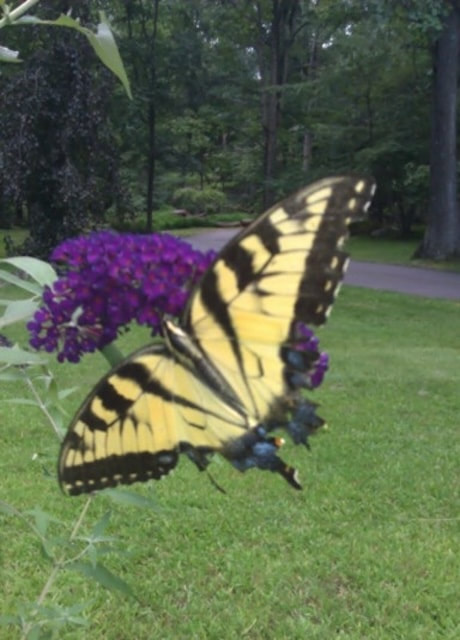
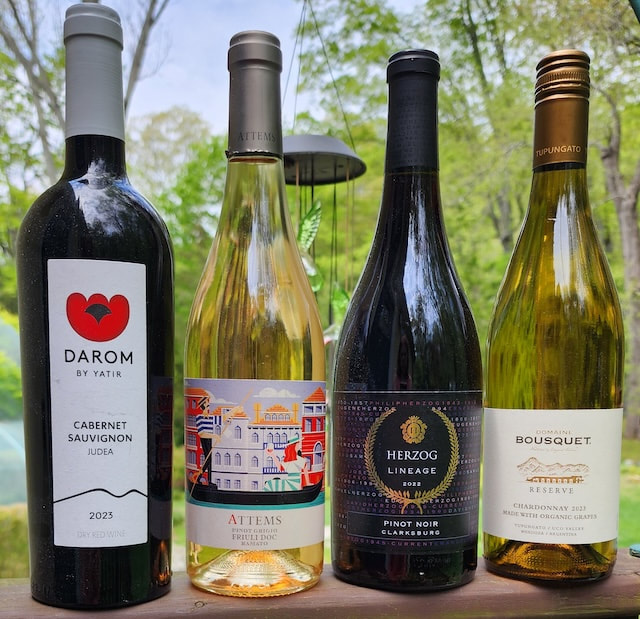
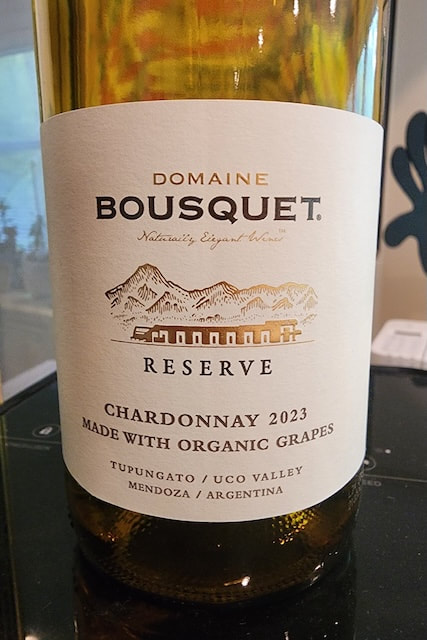
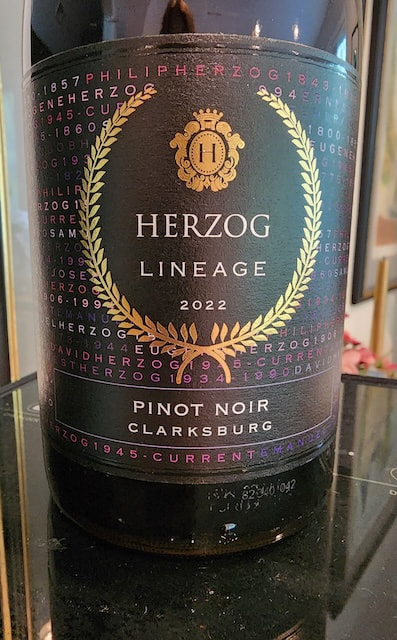
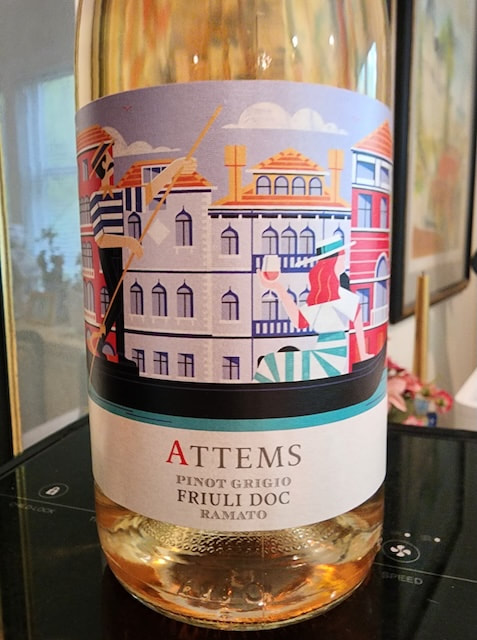
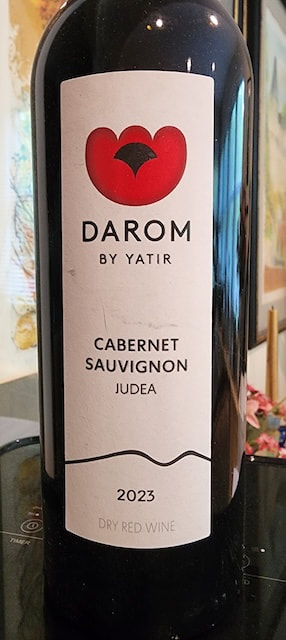







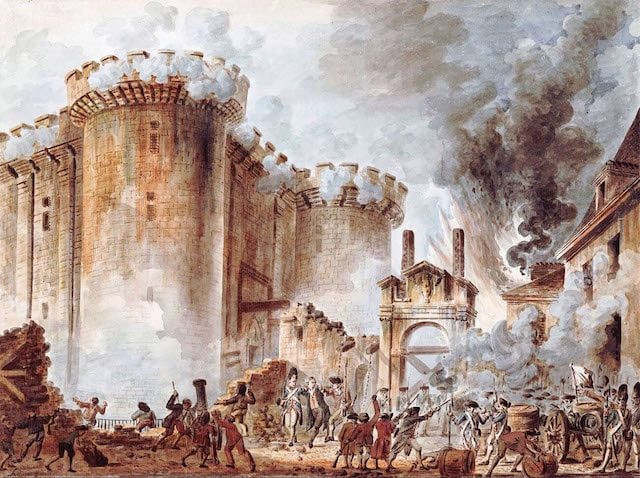
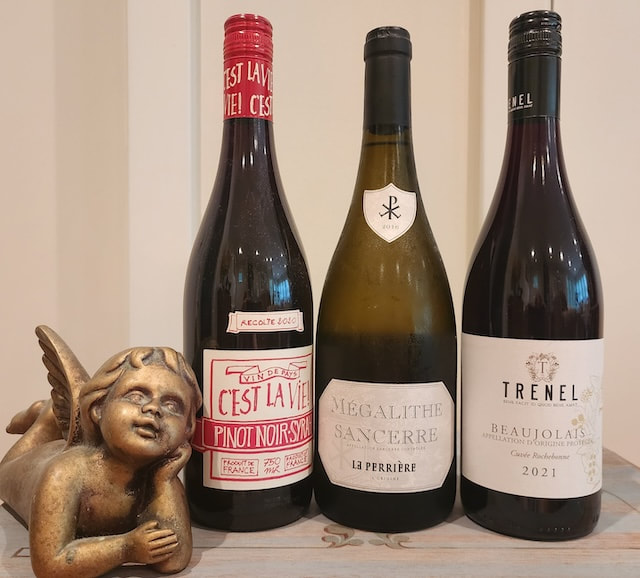
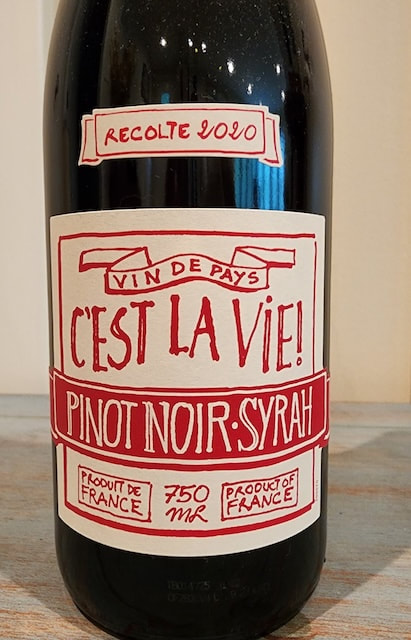
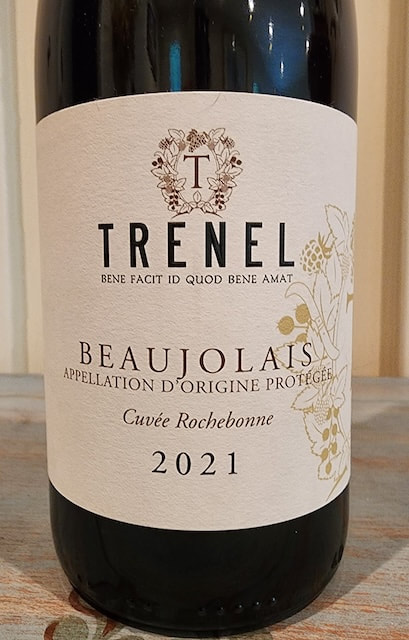
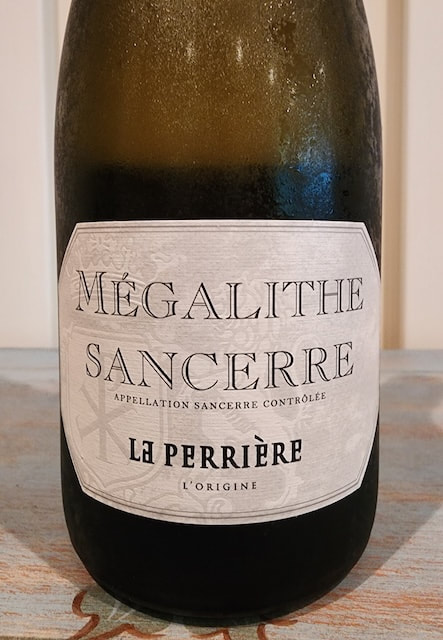

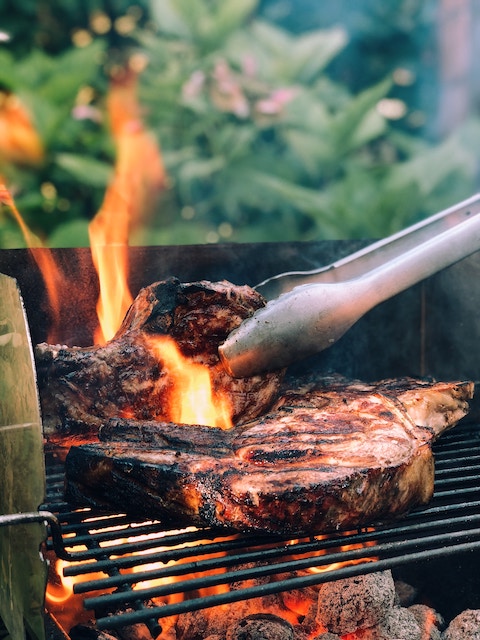
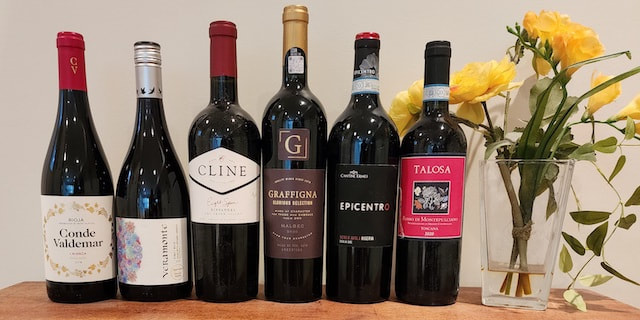
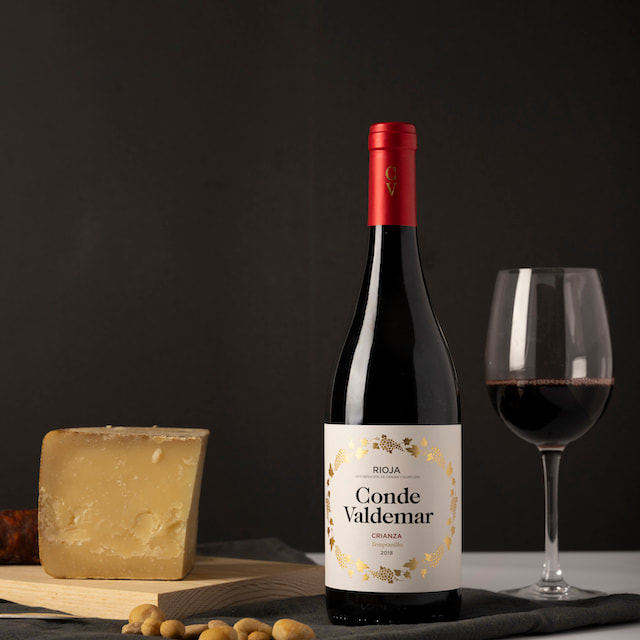

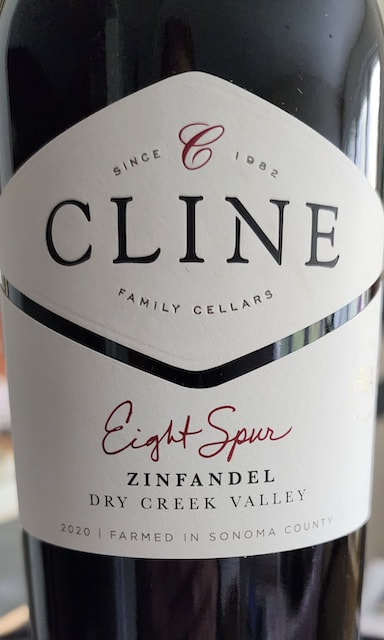
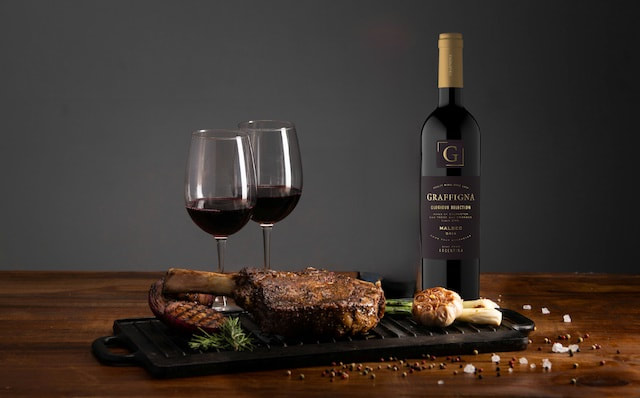
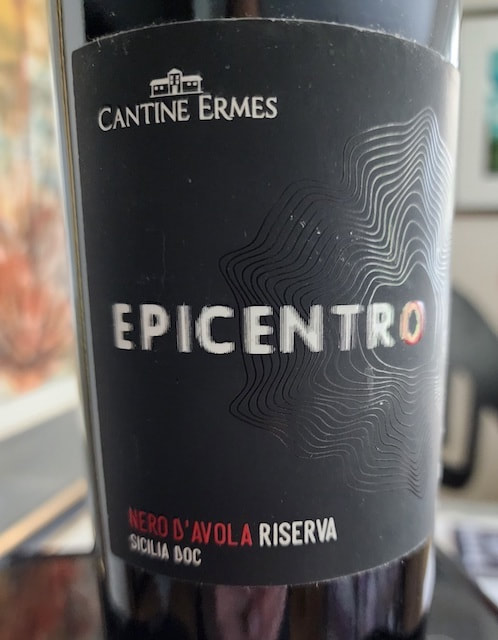
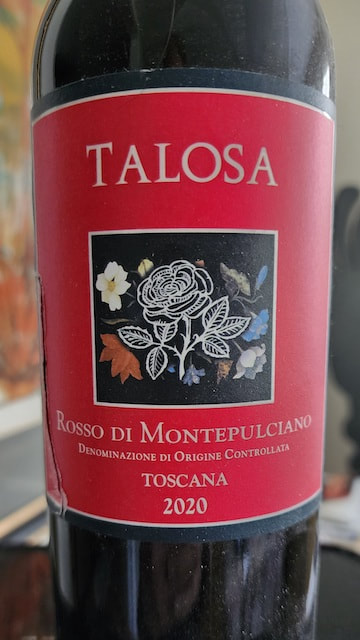
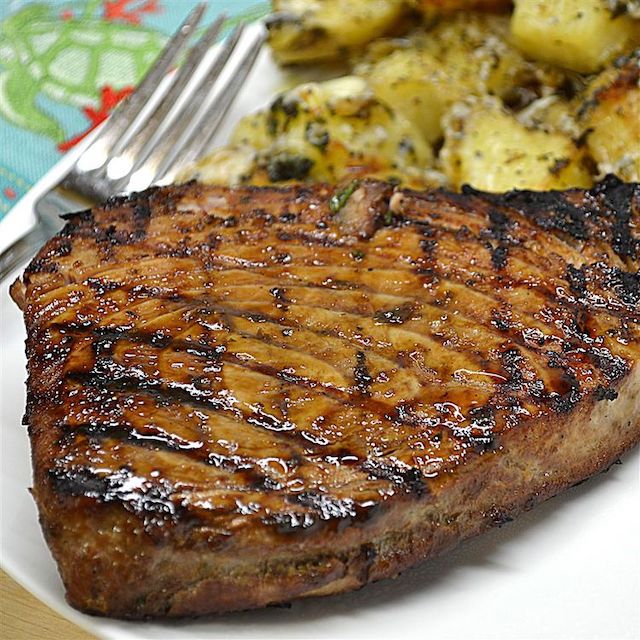
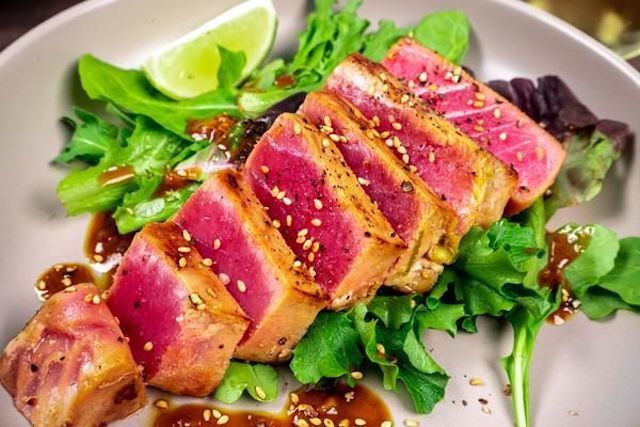
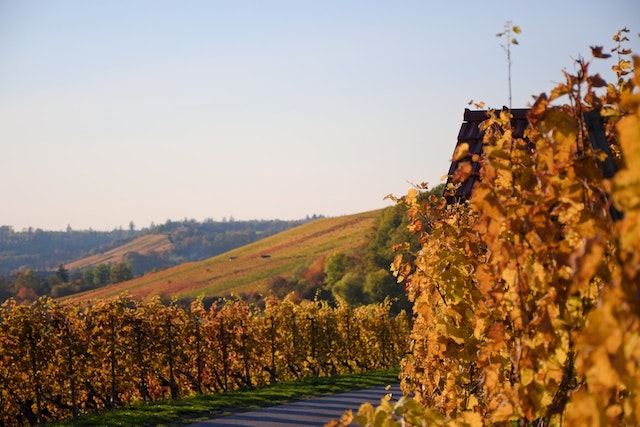
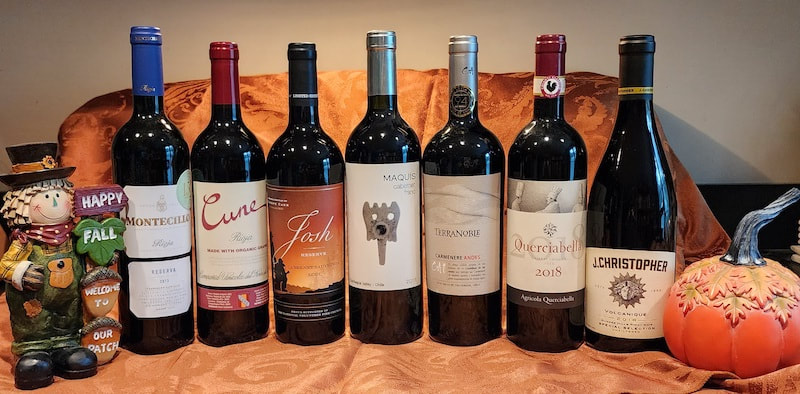
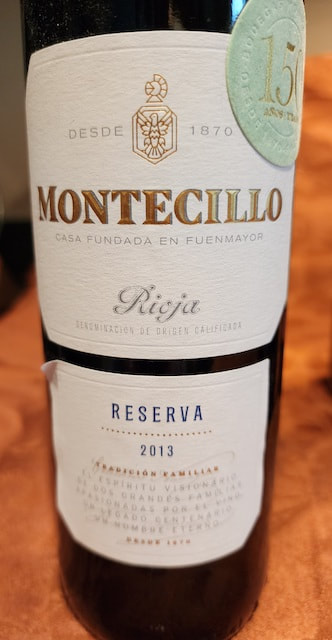
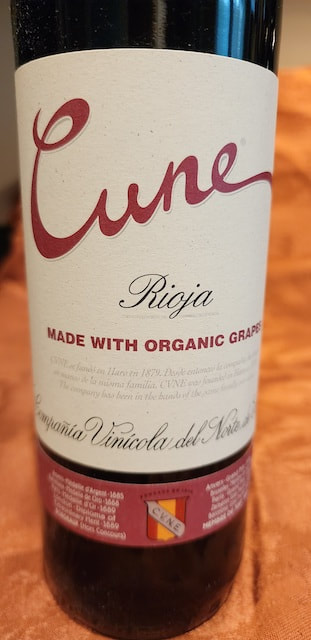
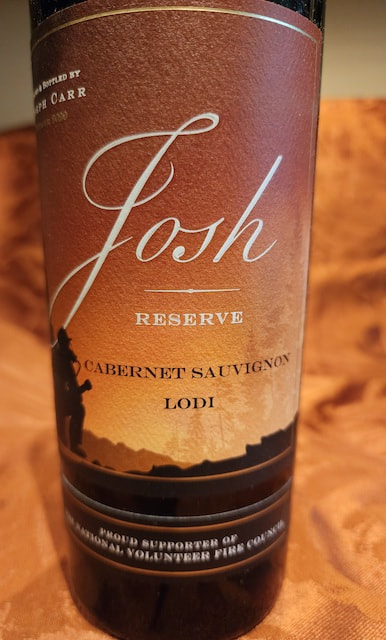
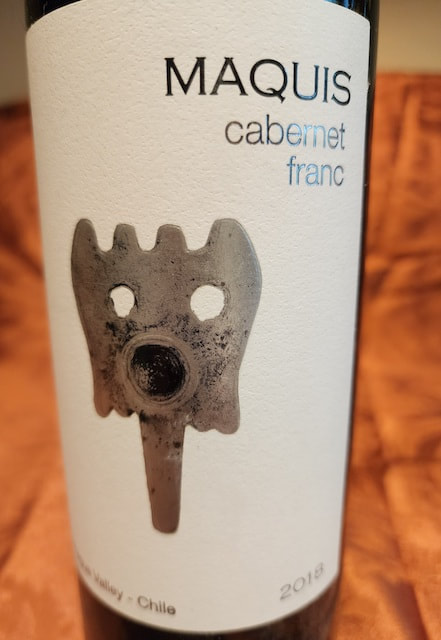
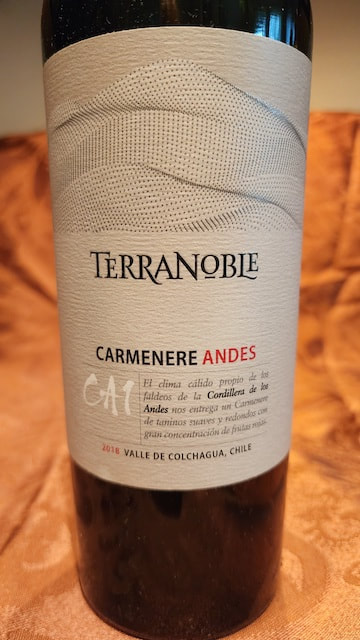
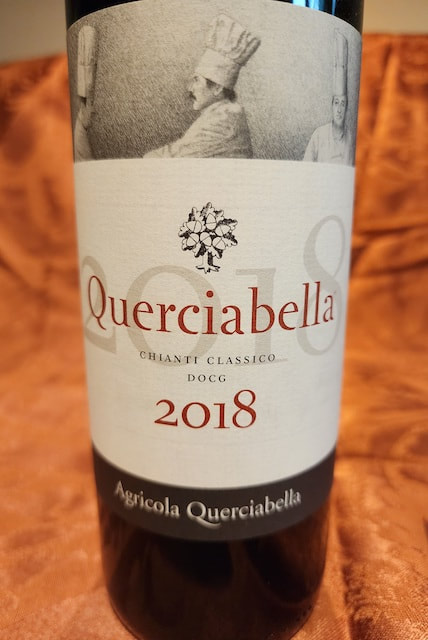
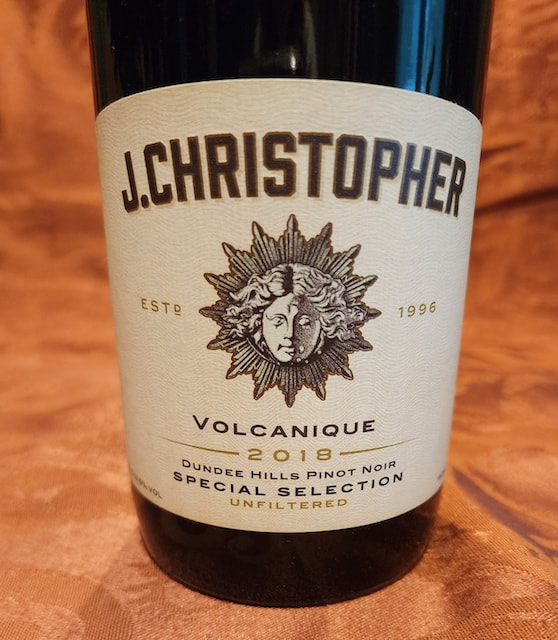
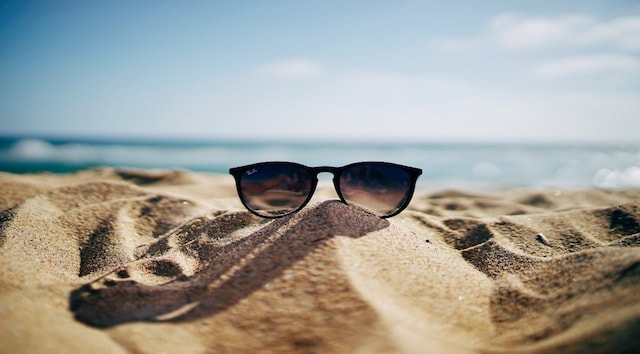
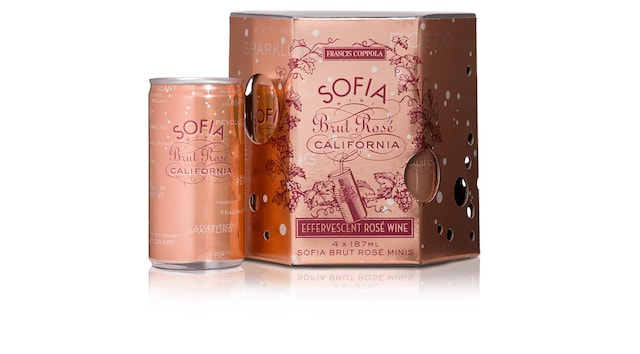
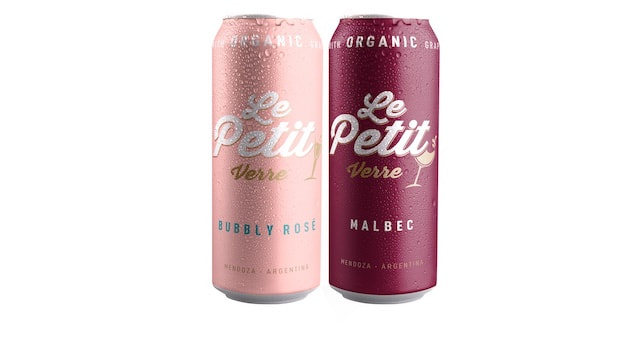
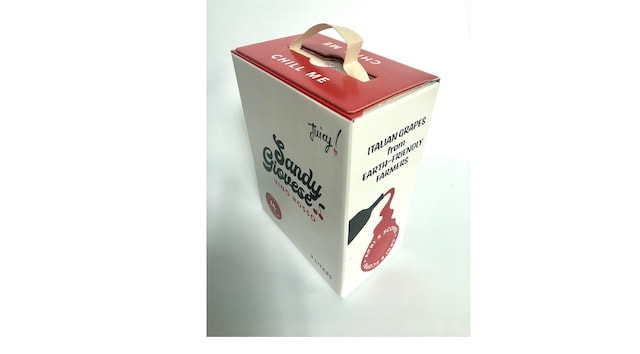
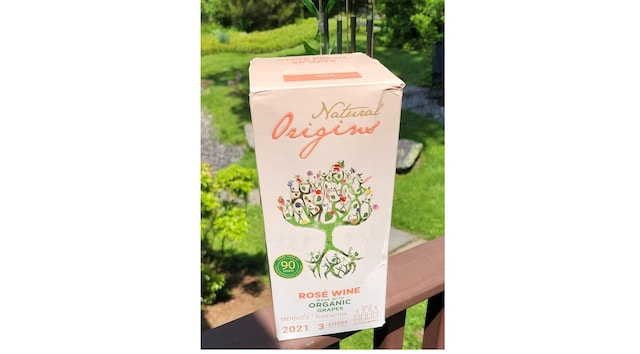
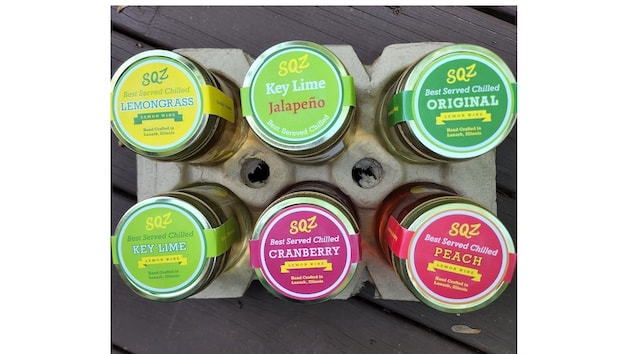
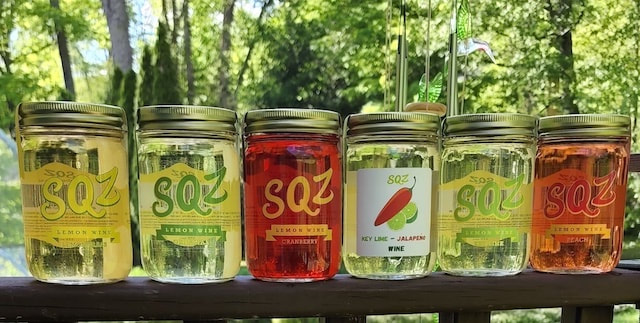
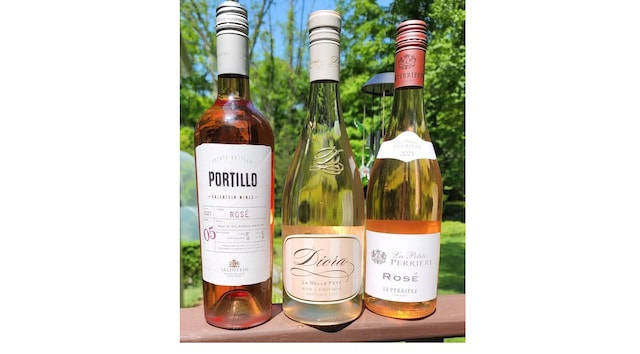
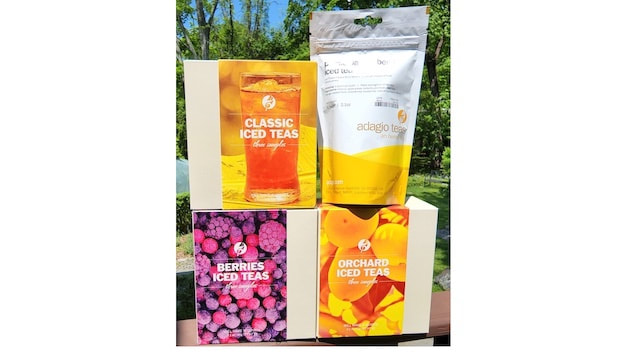
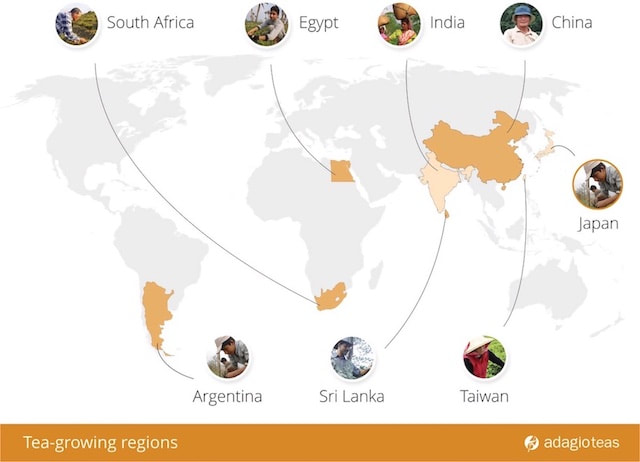
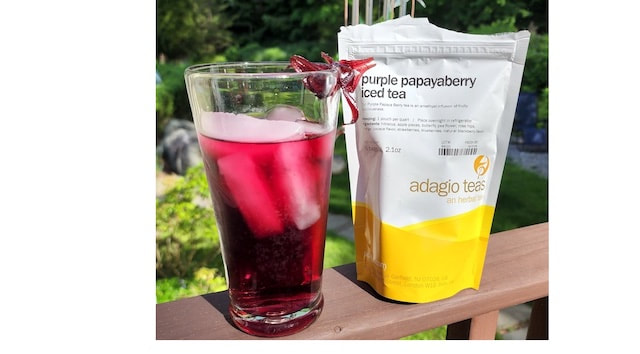
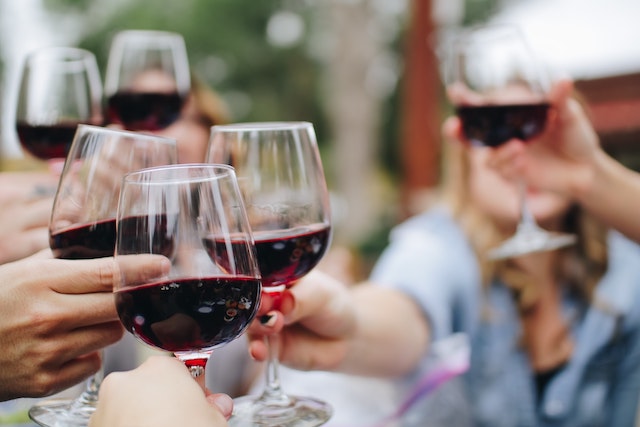
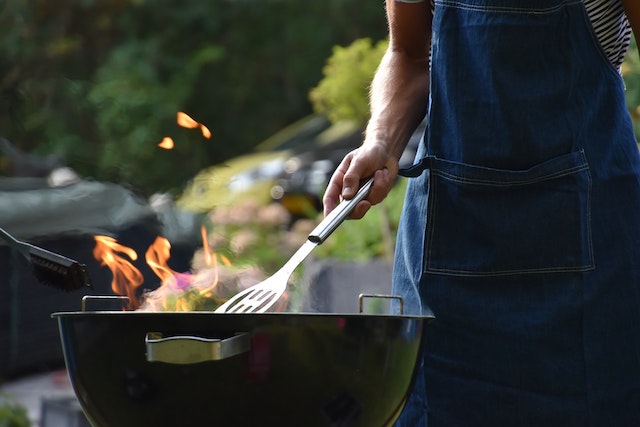
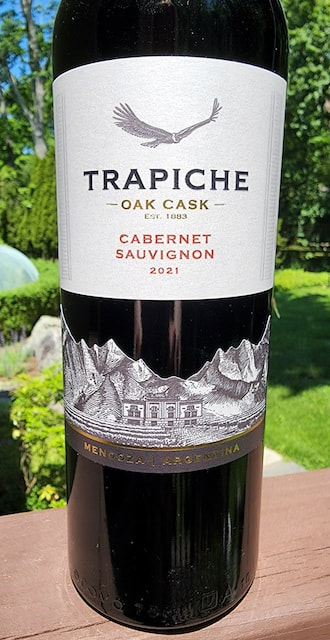
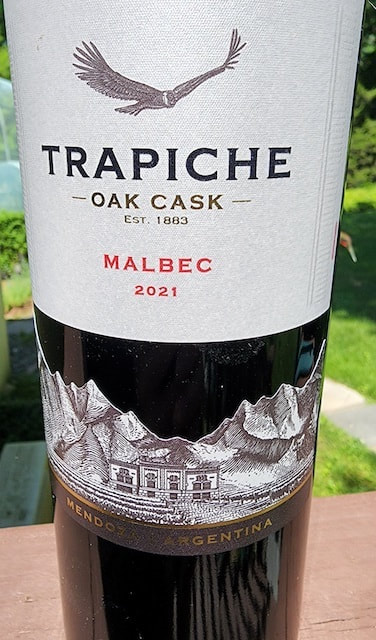
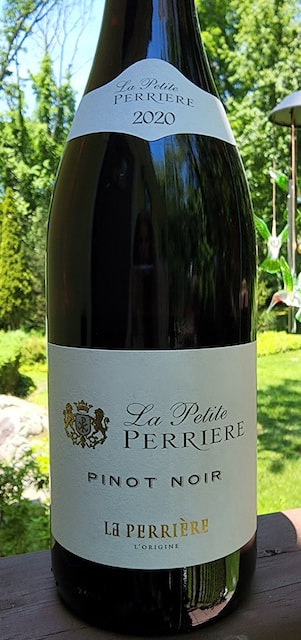
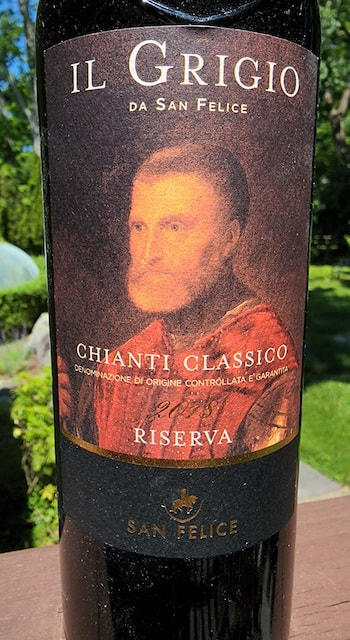
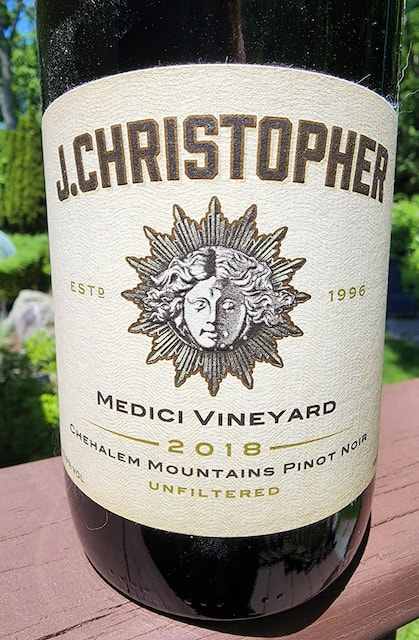
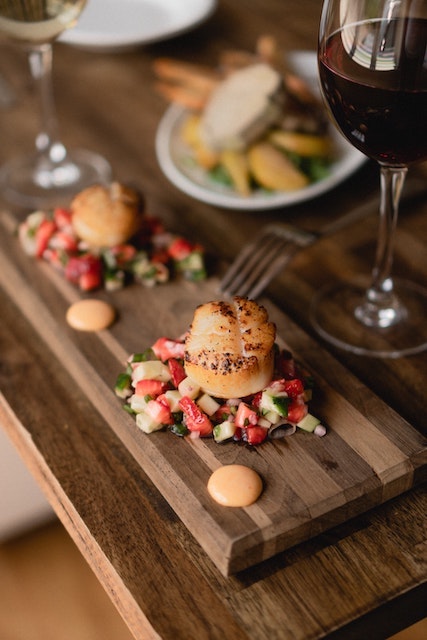
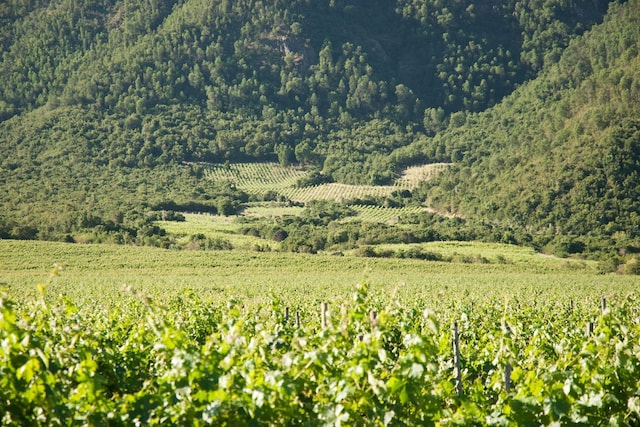
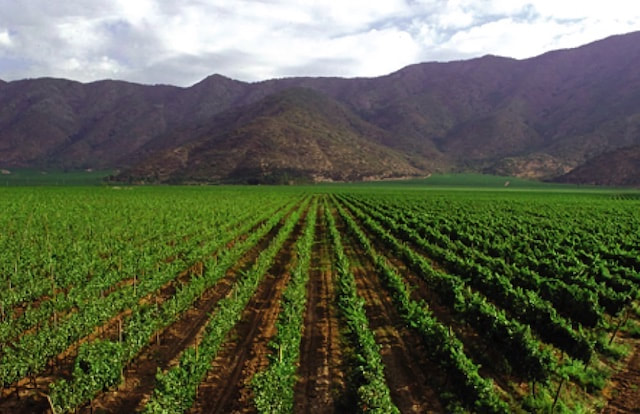
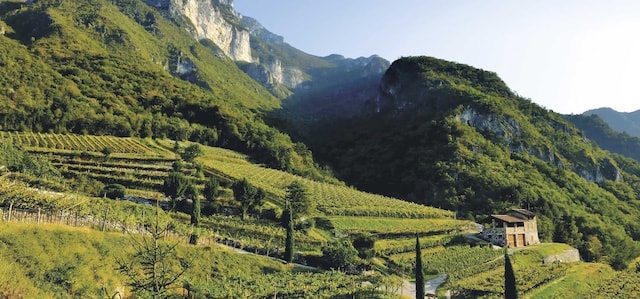
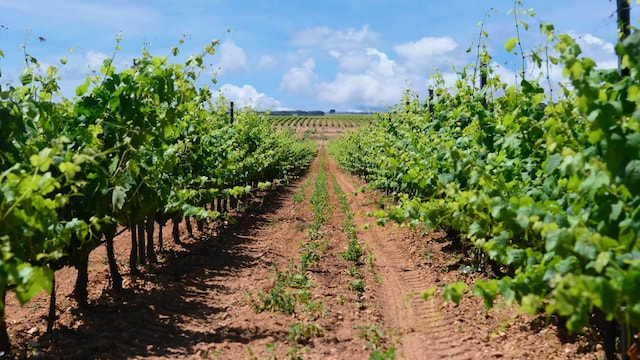
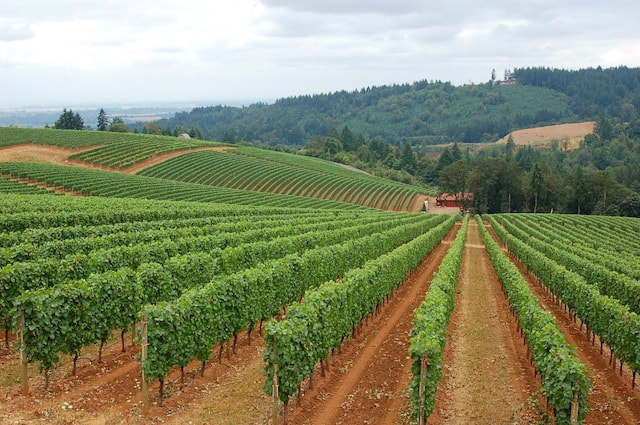
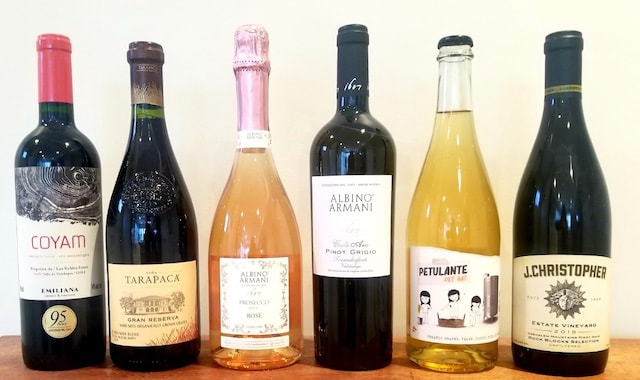
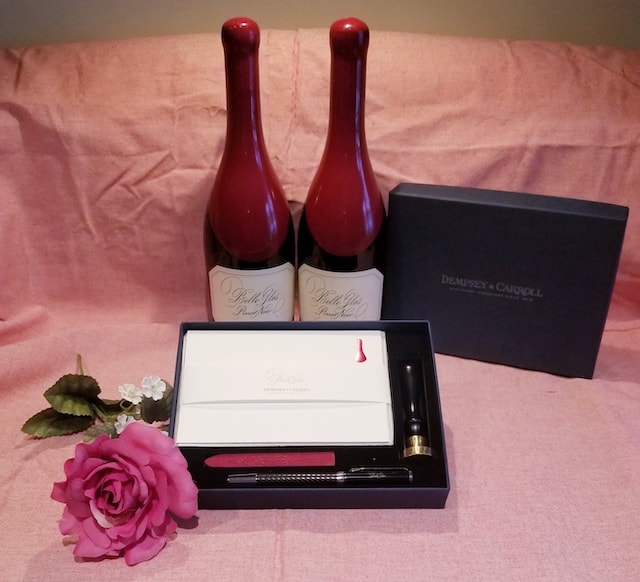
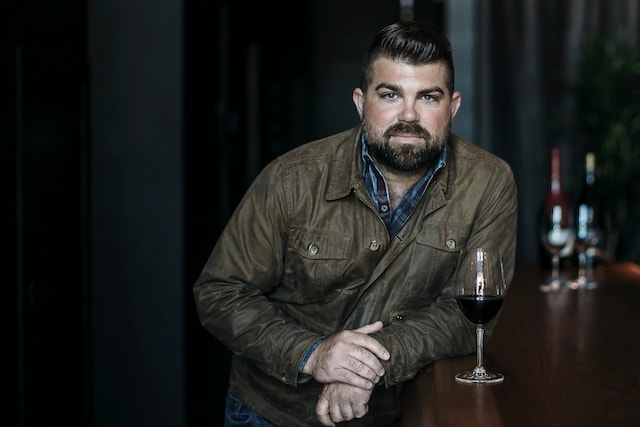
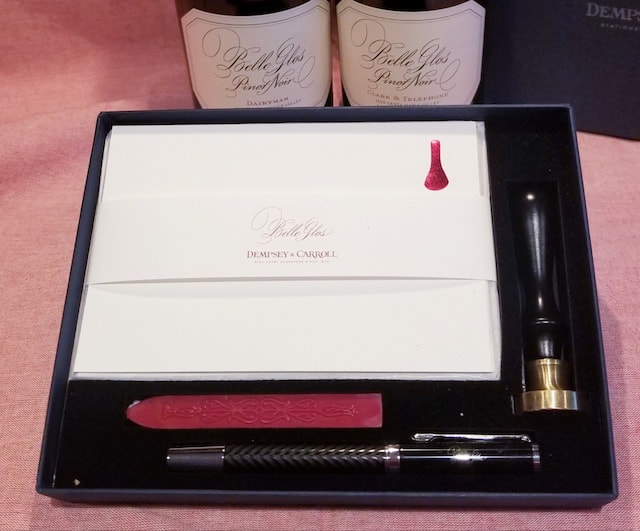

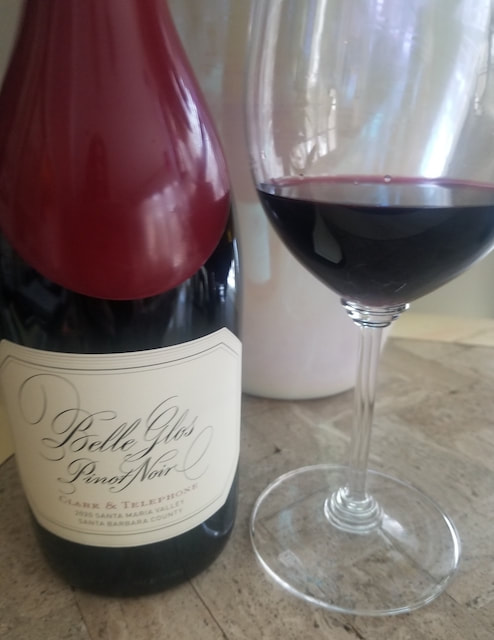
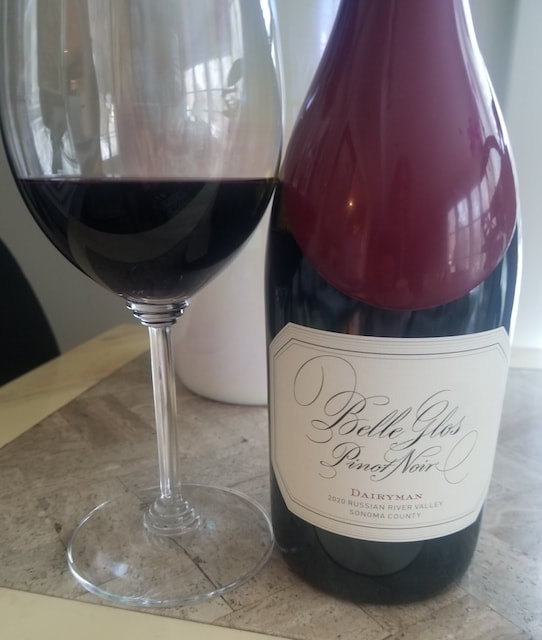
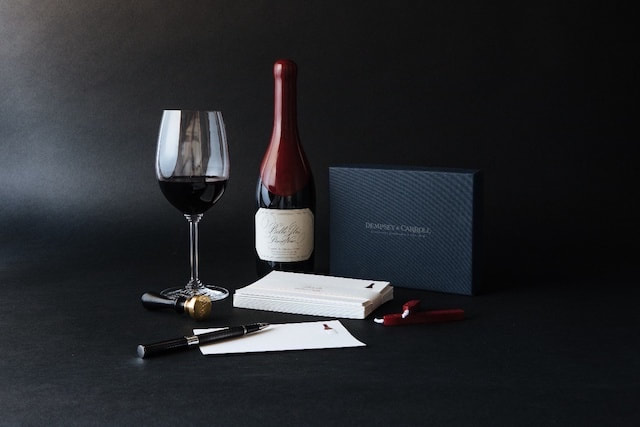

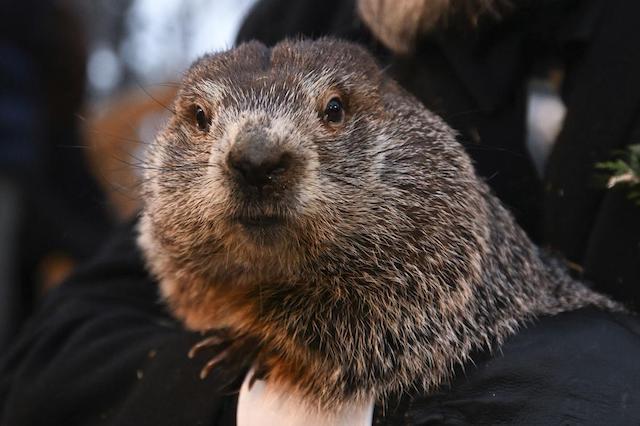
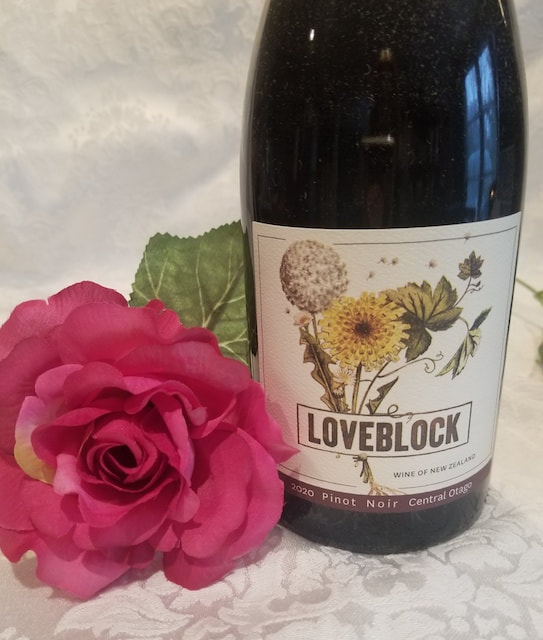
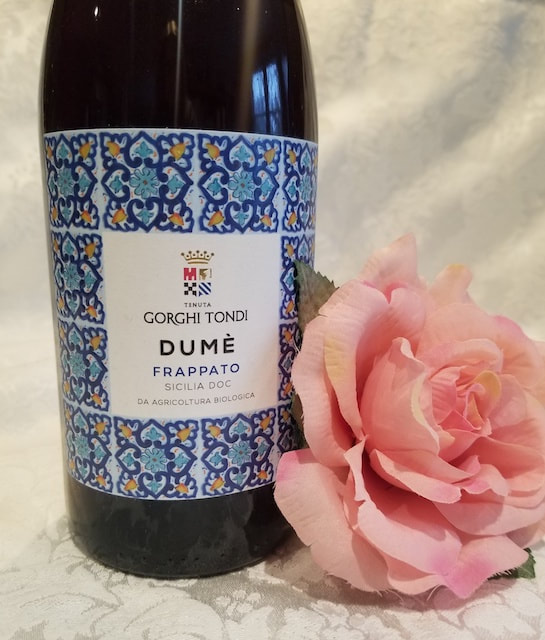
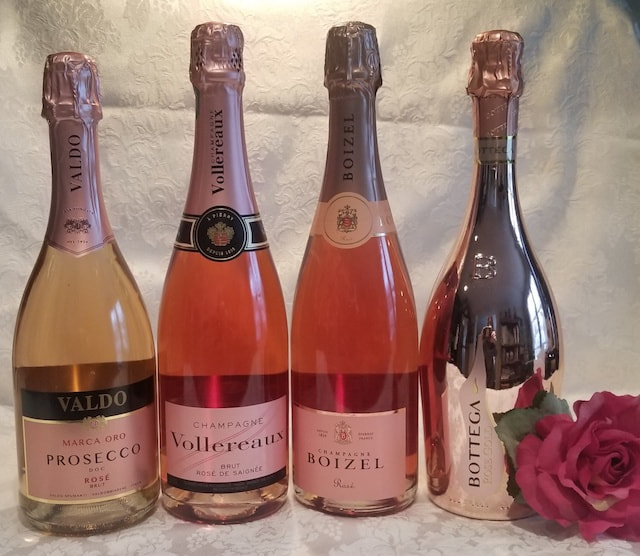
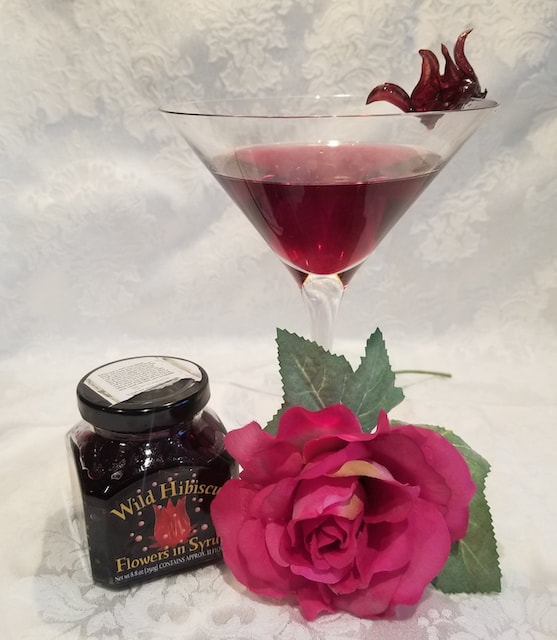
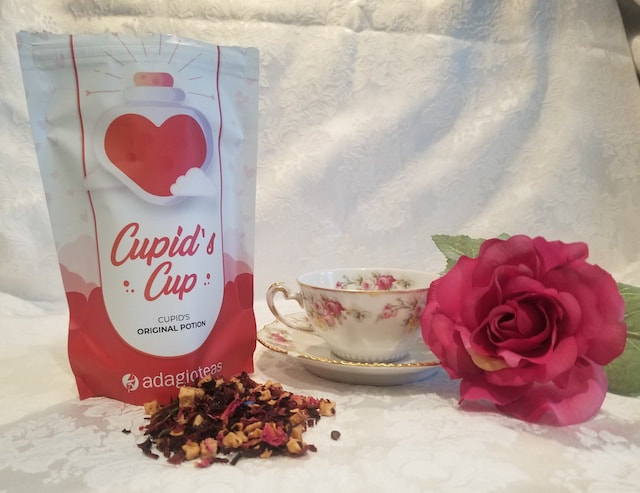
 RSS Feed
RSS Feed